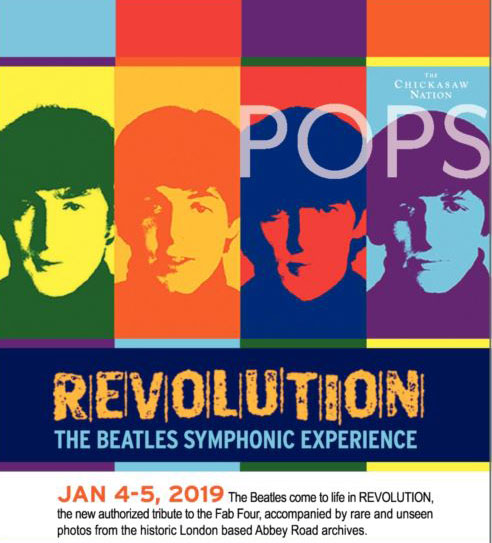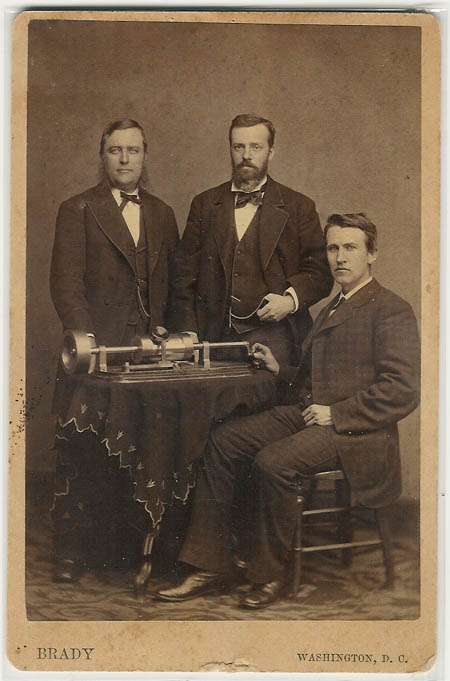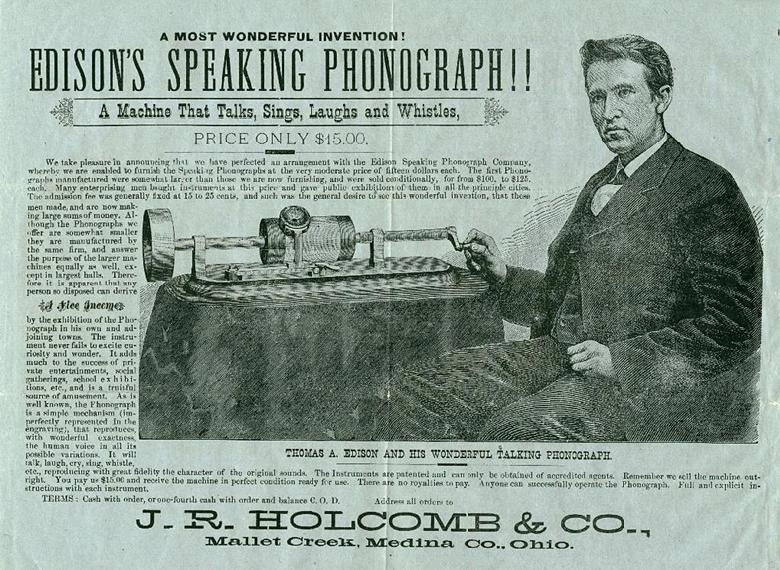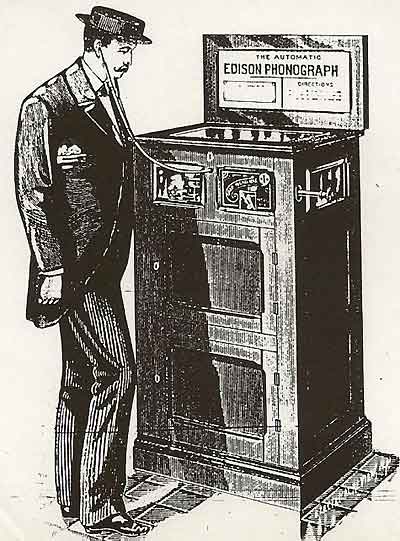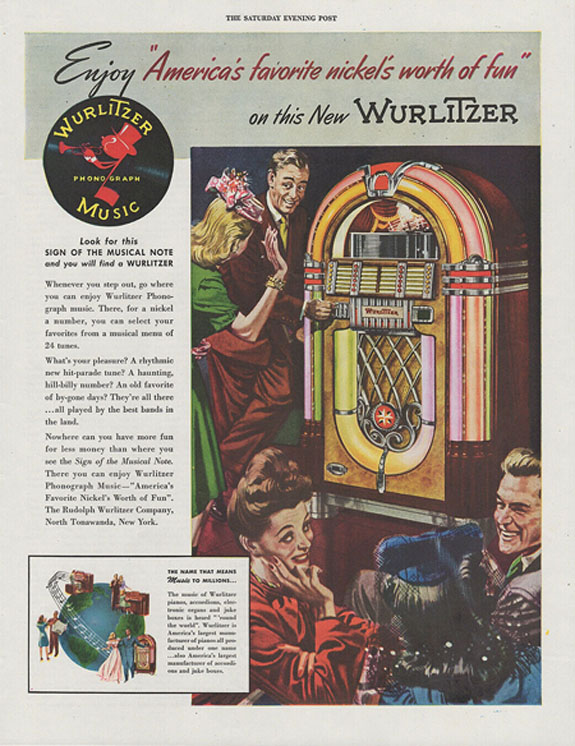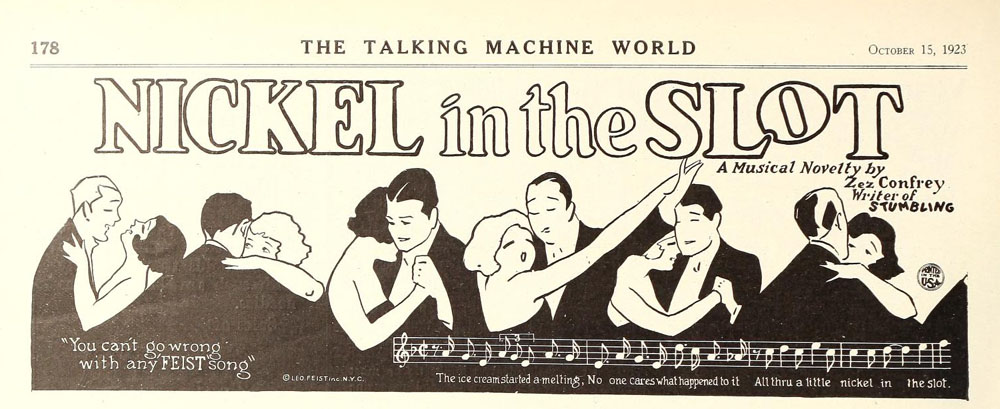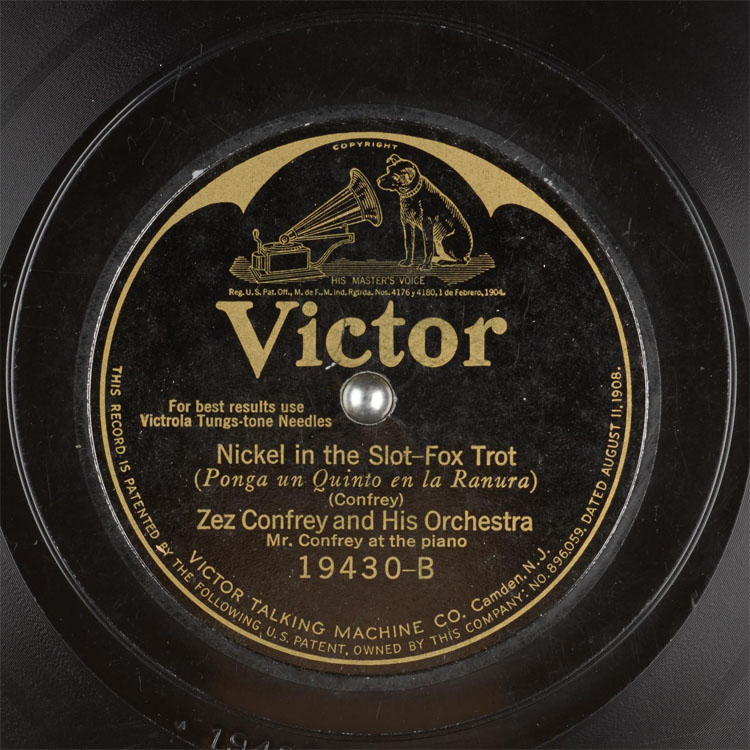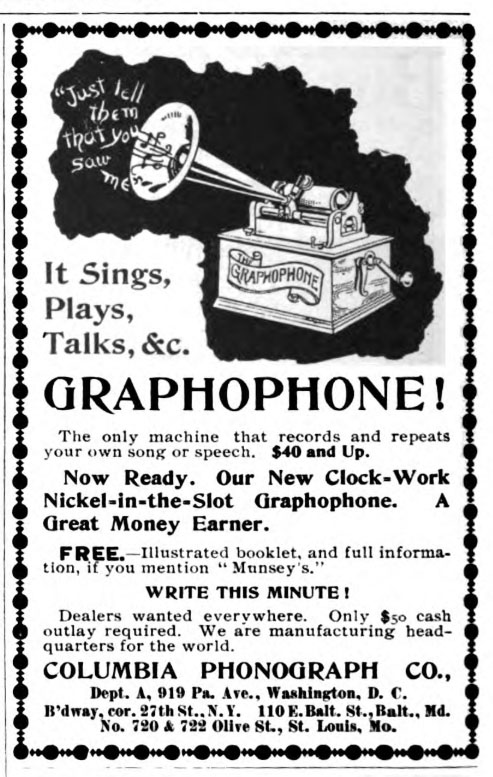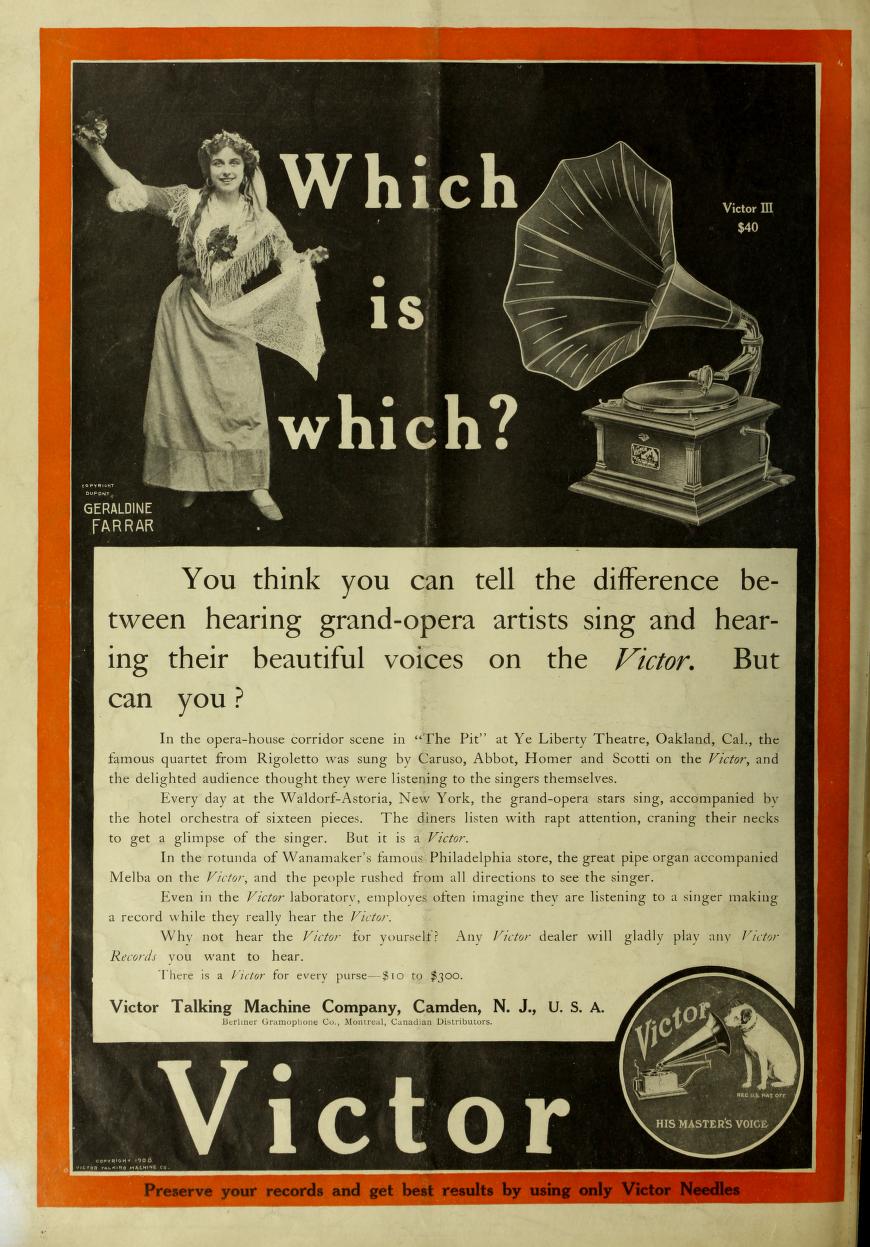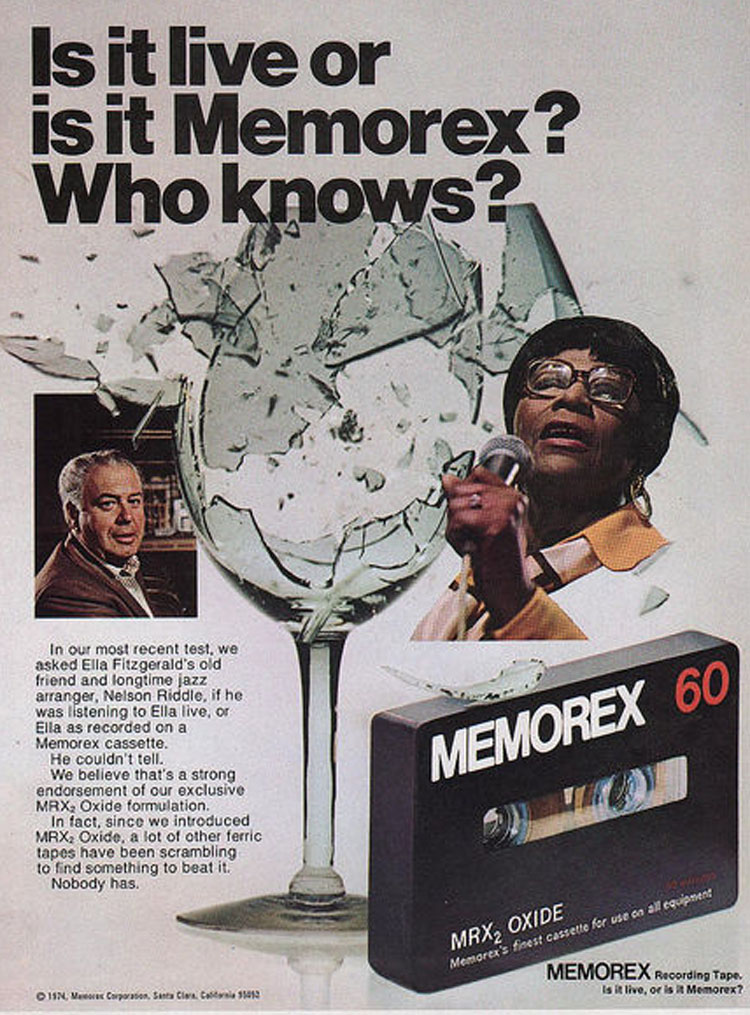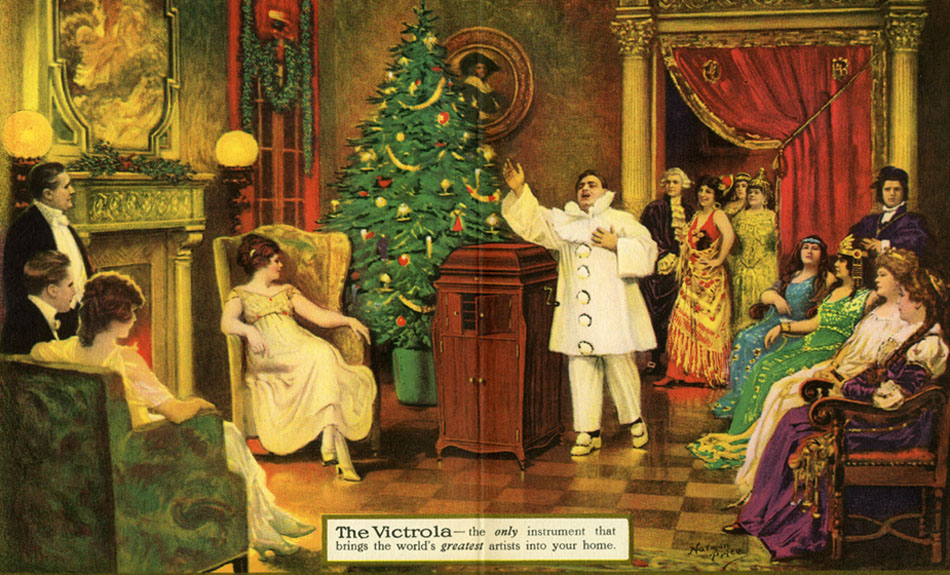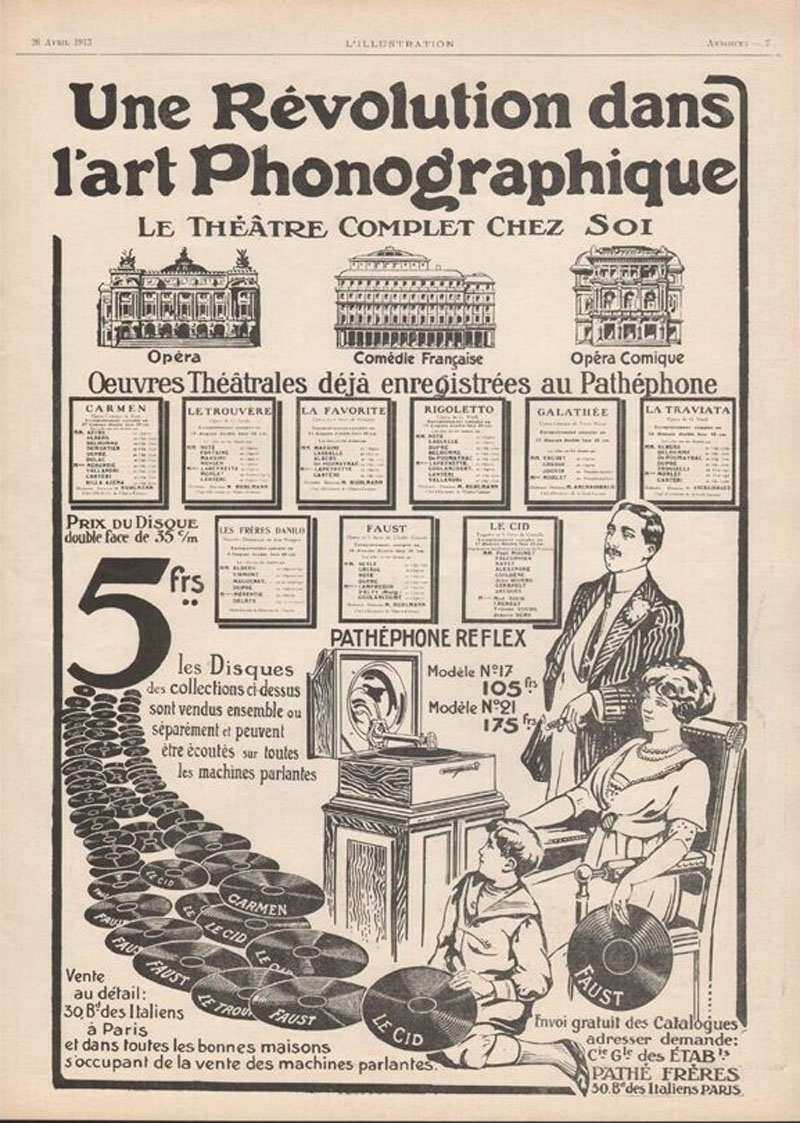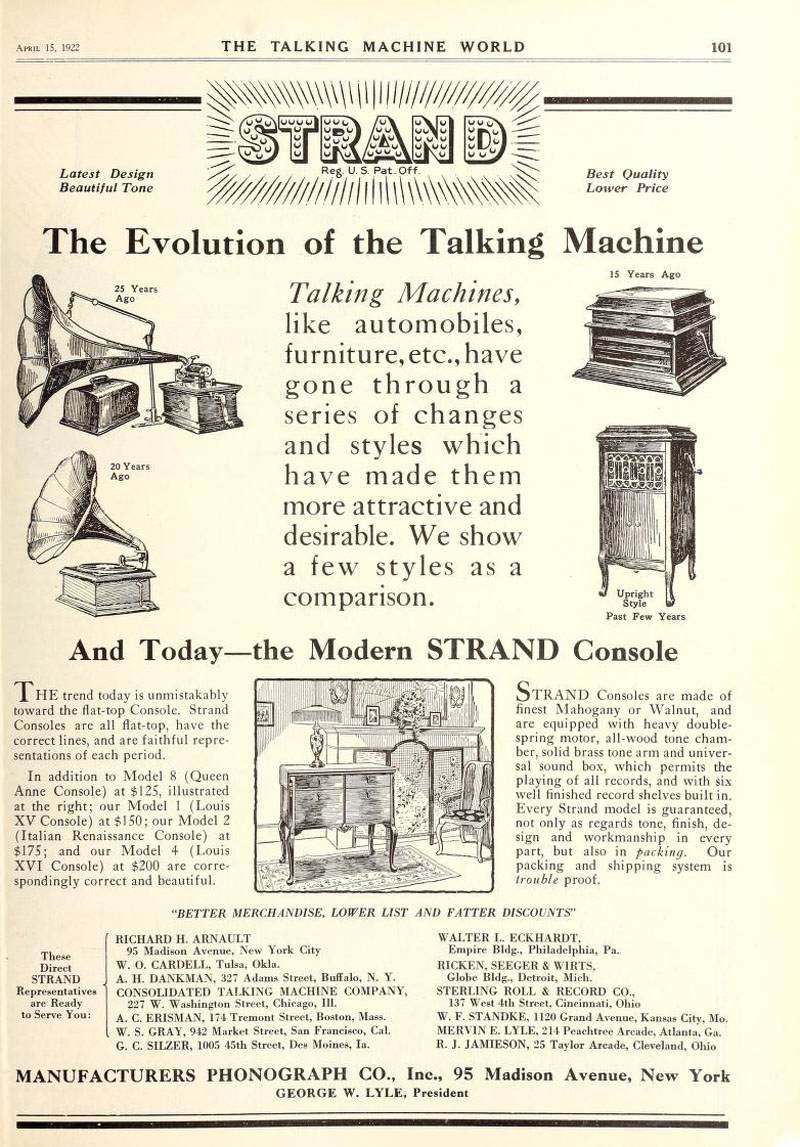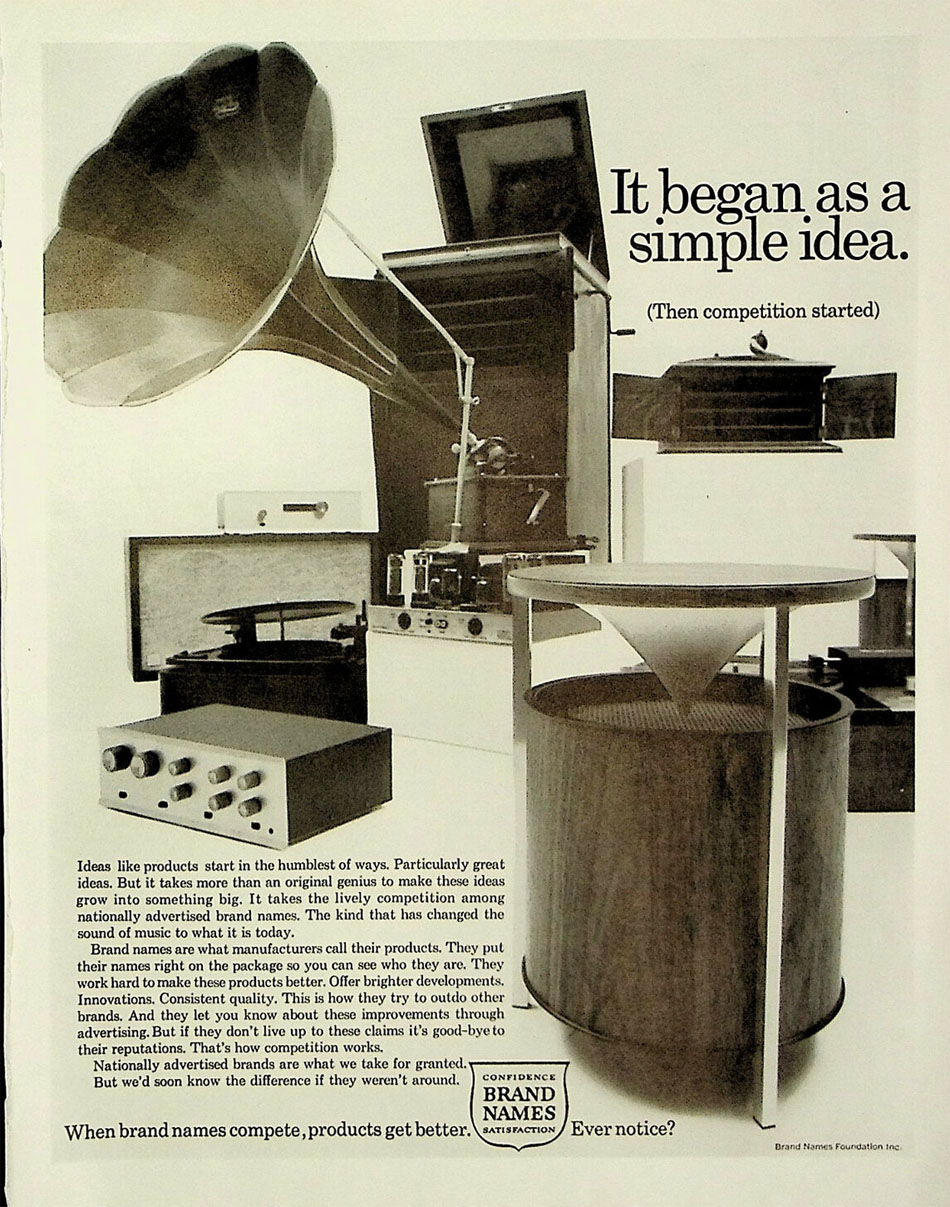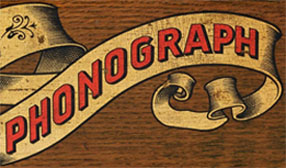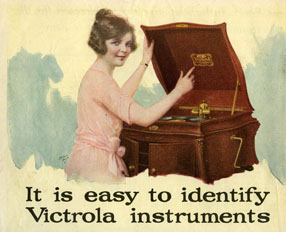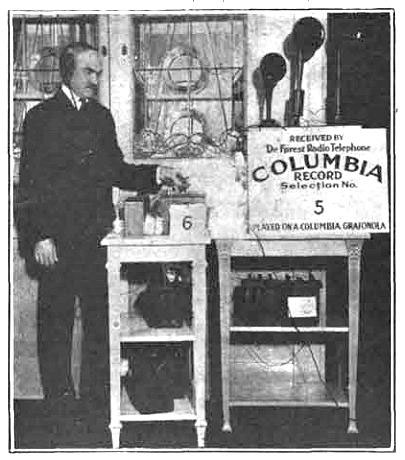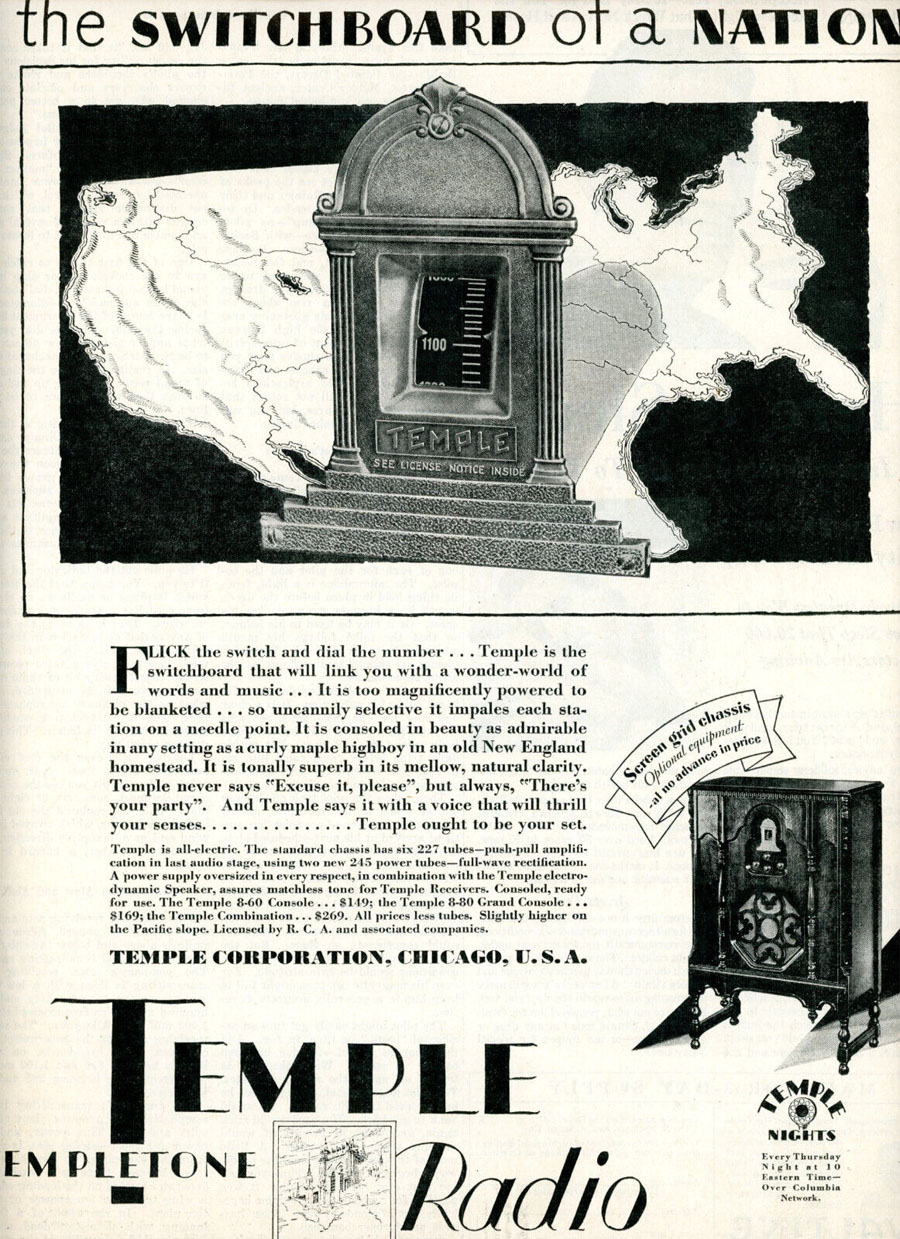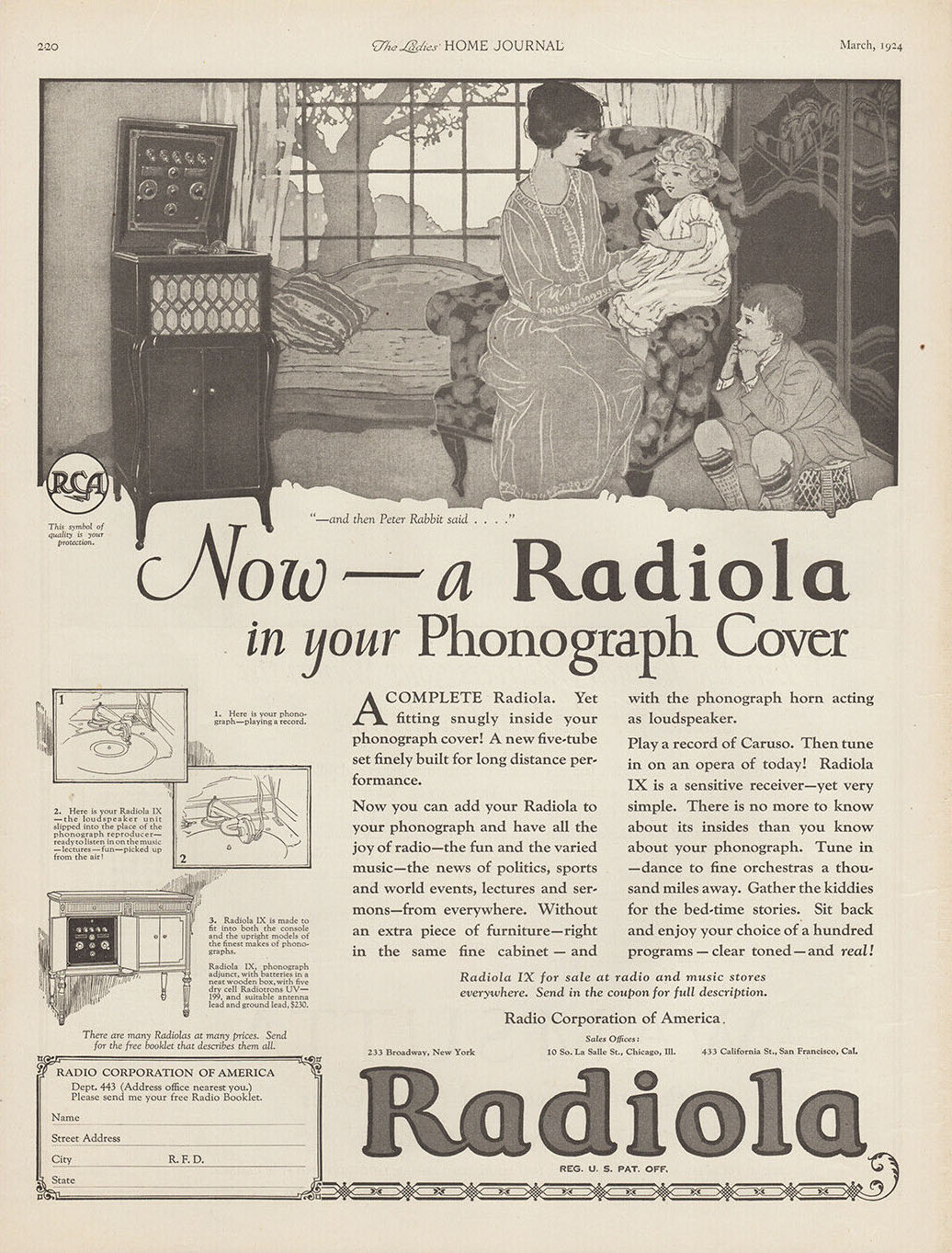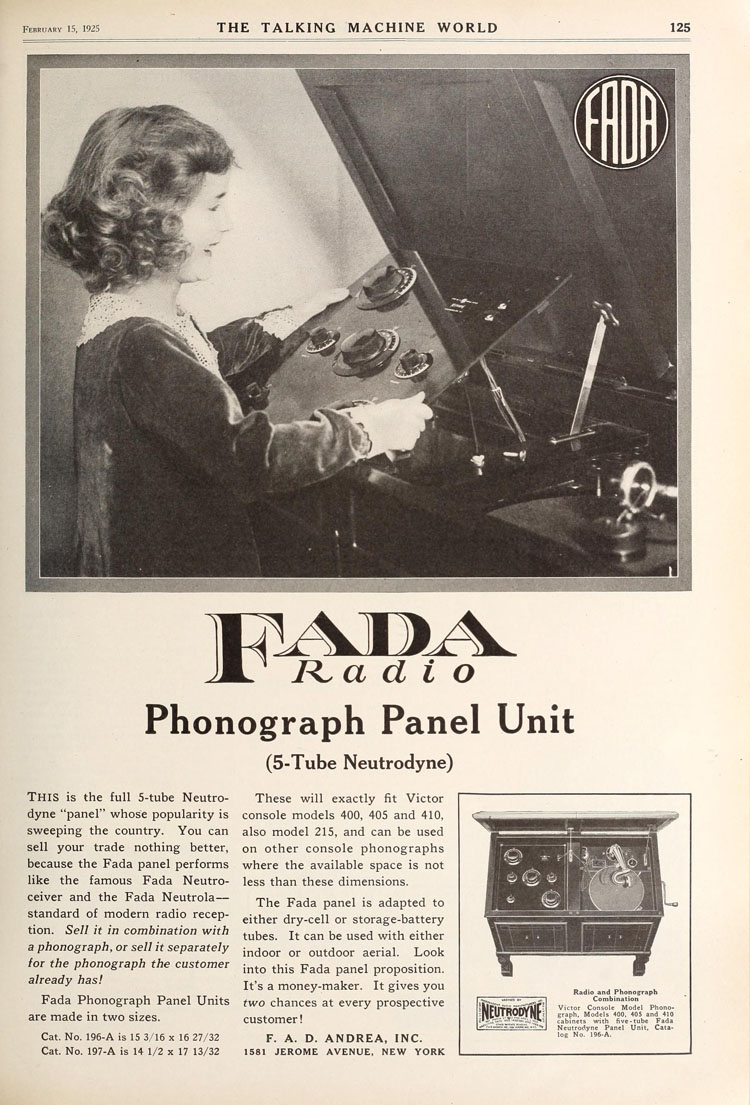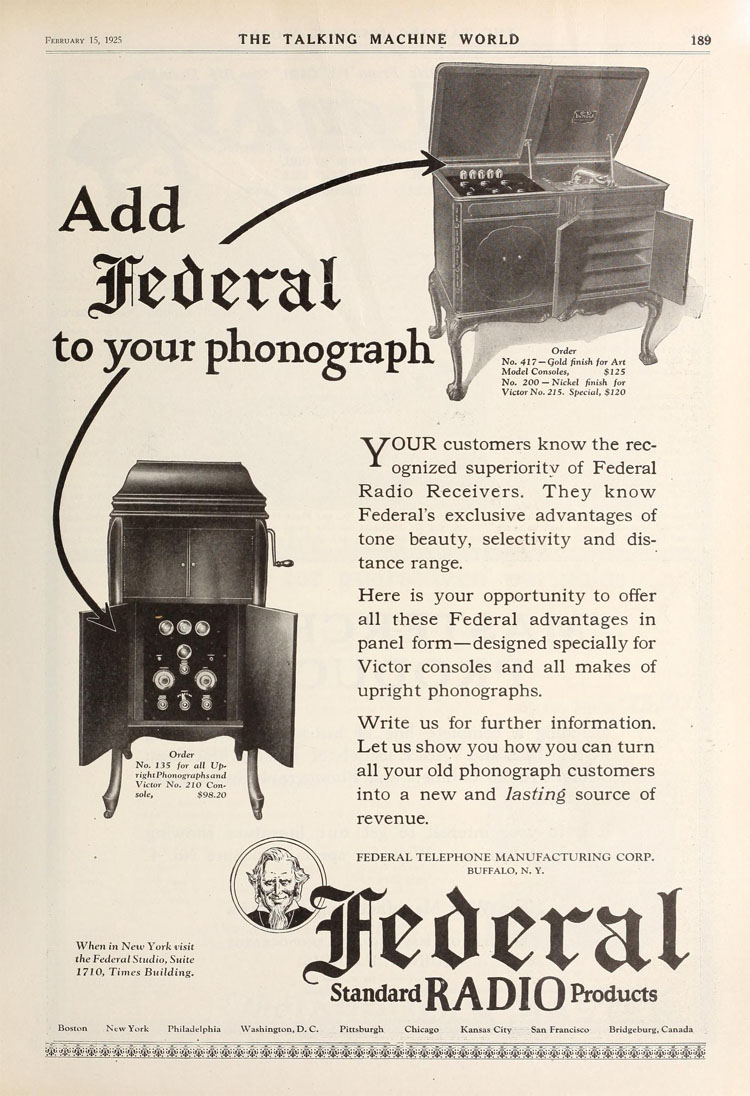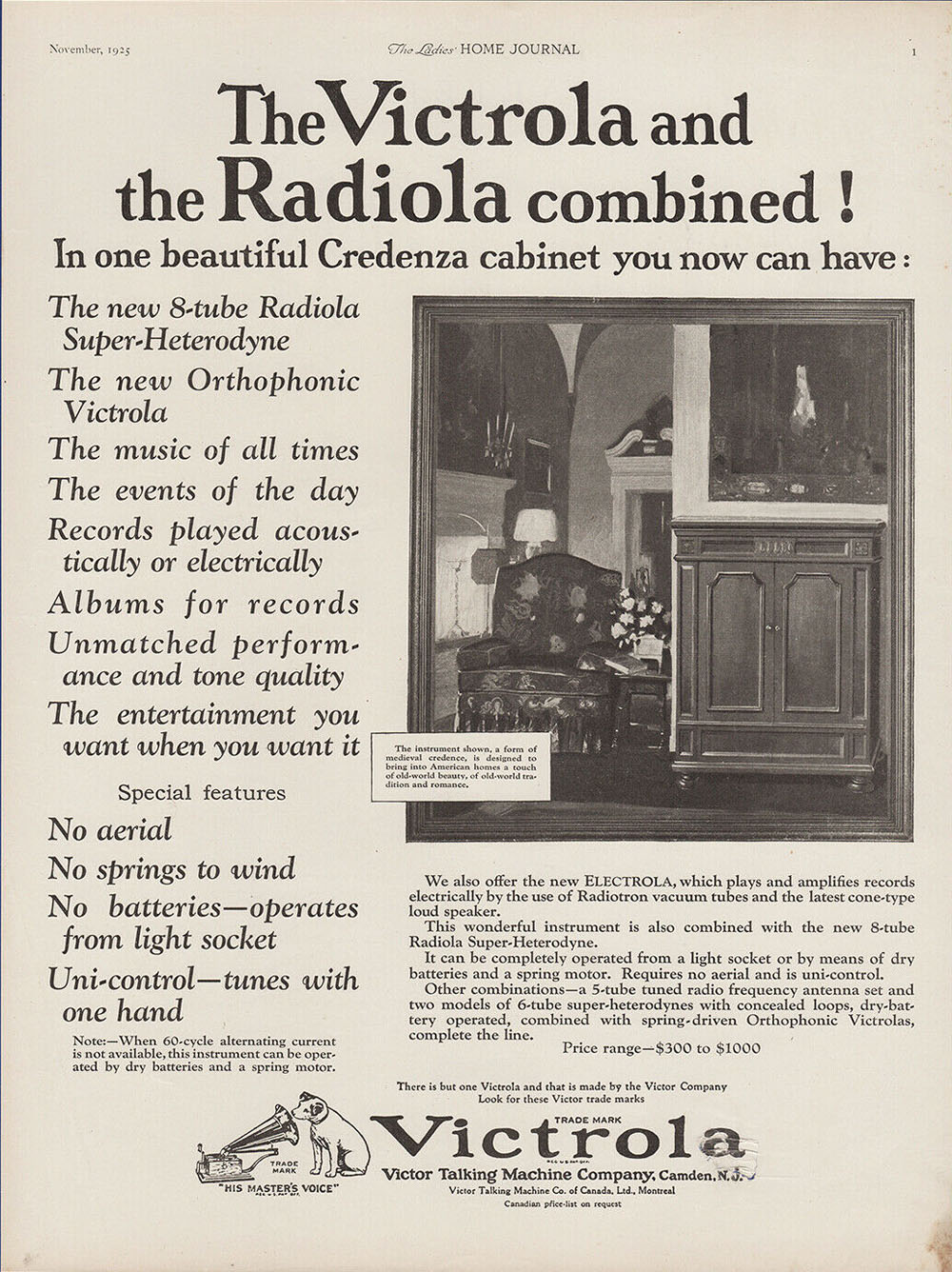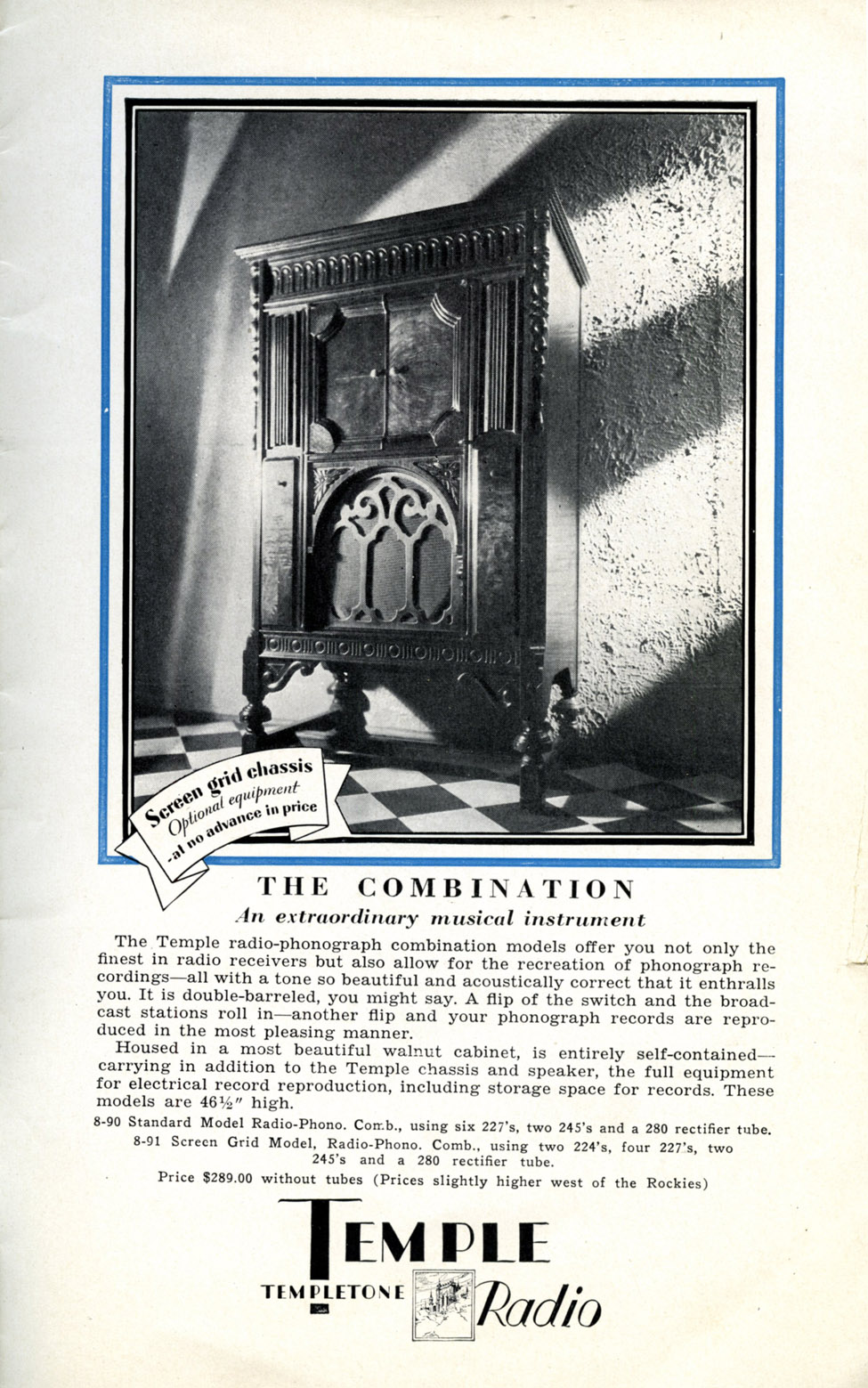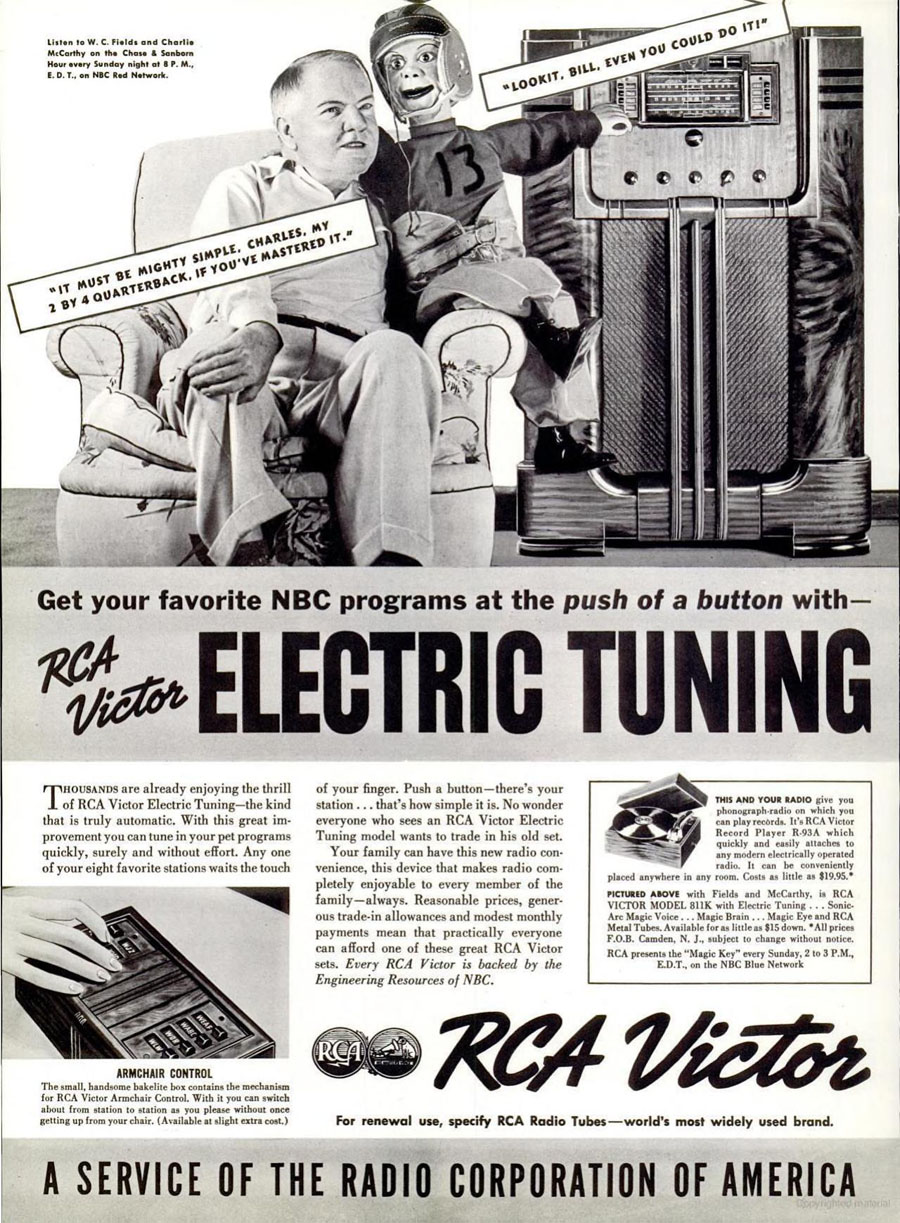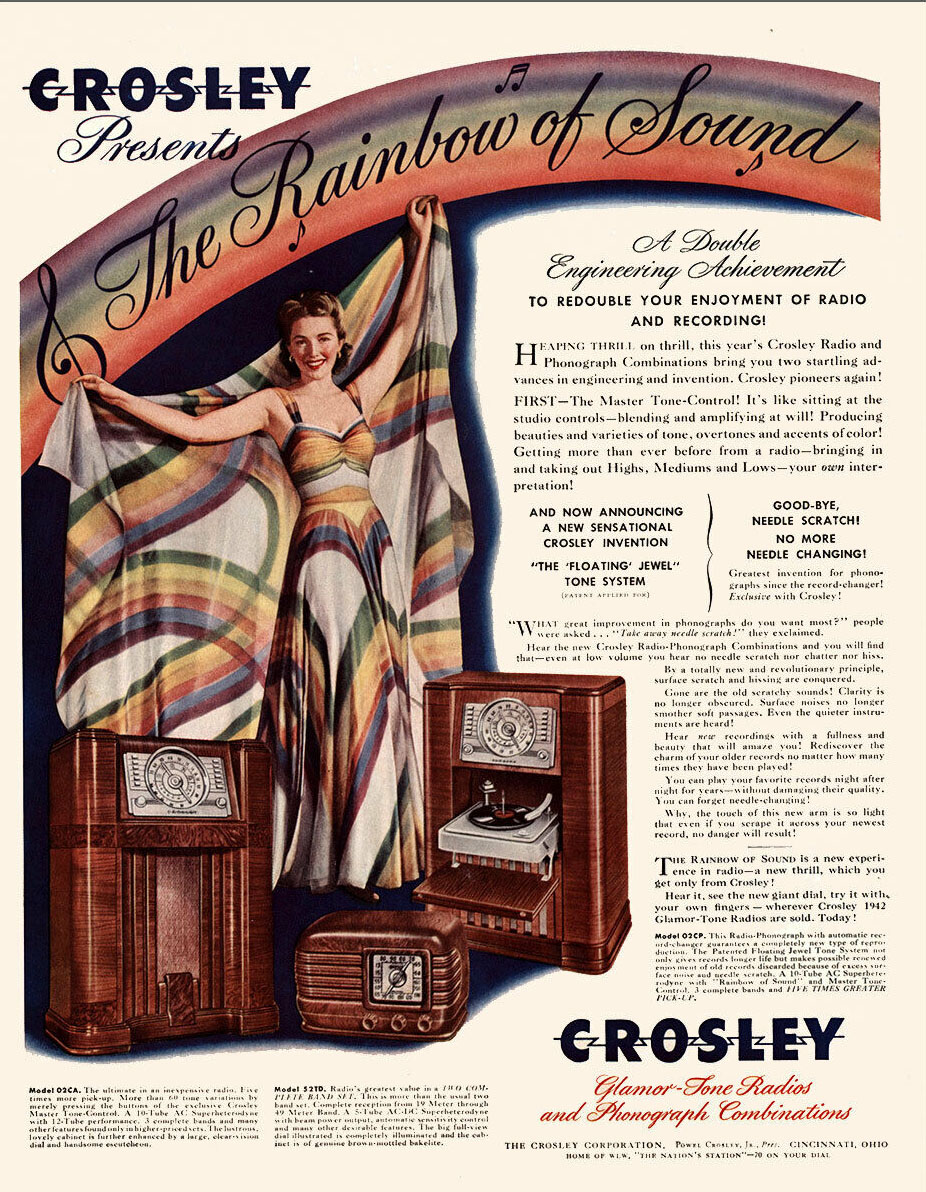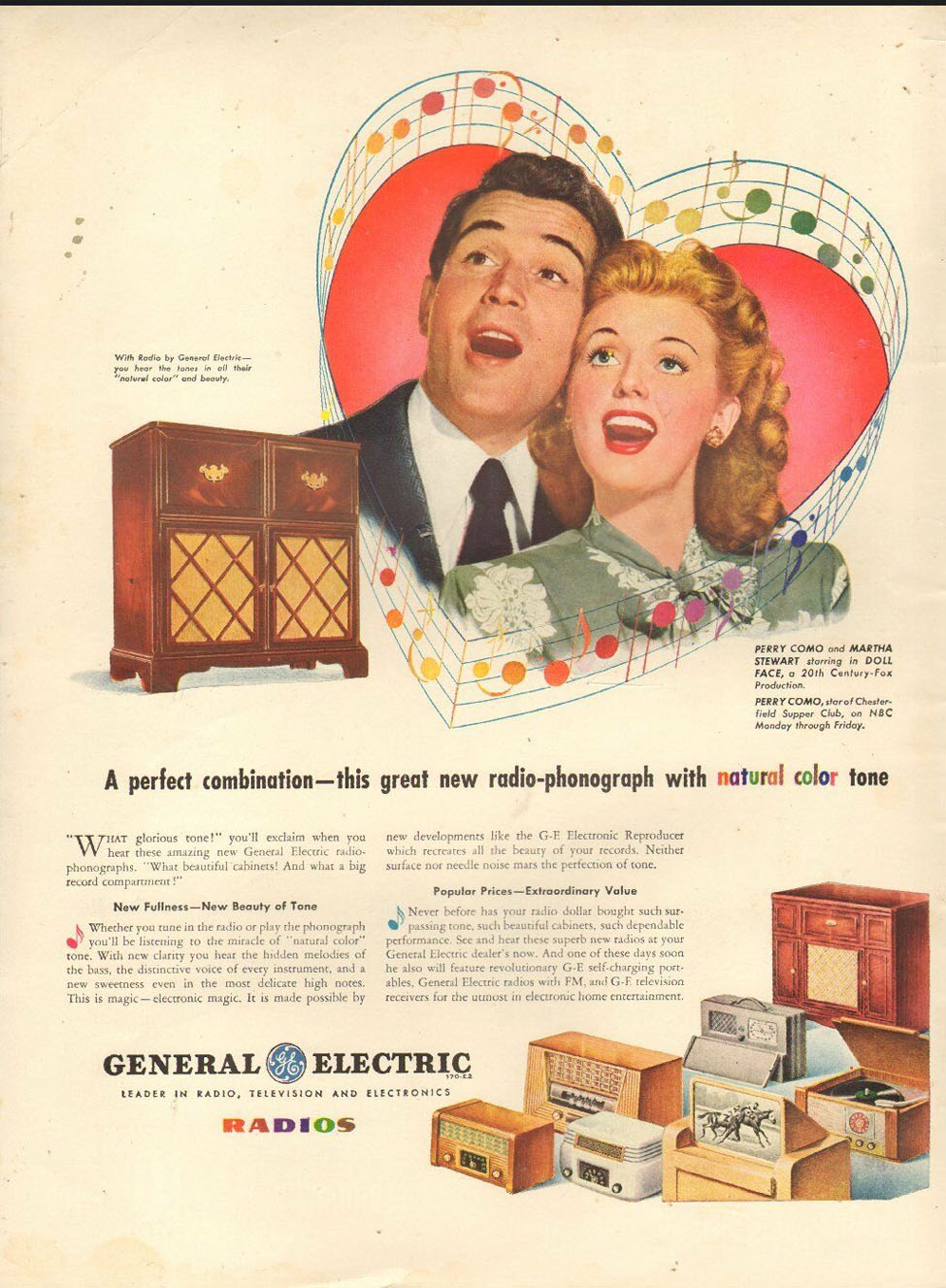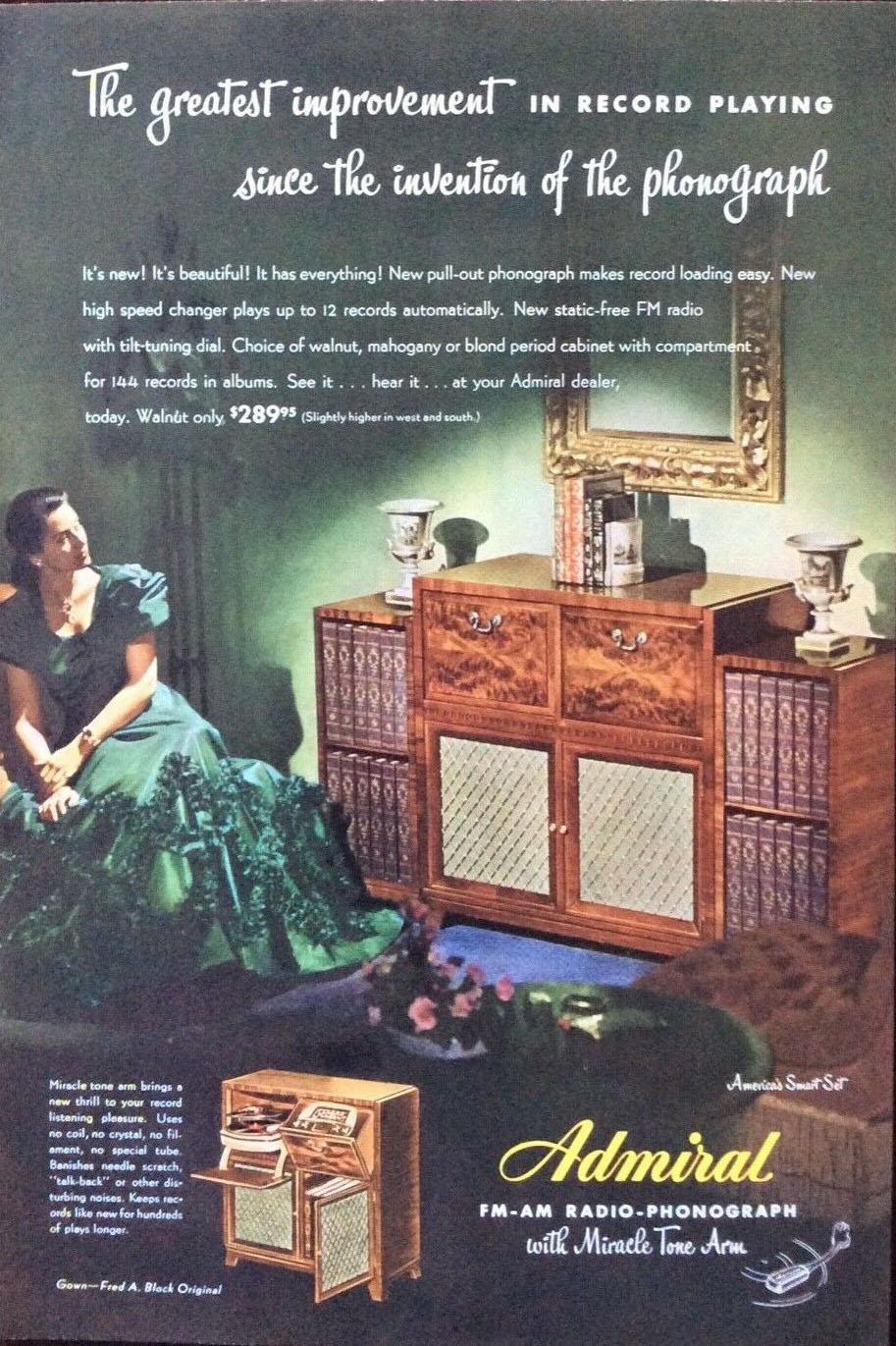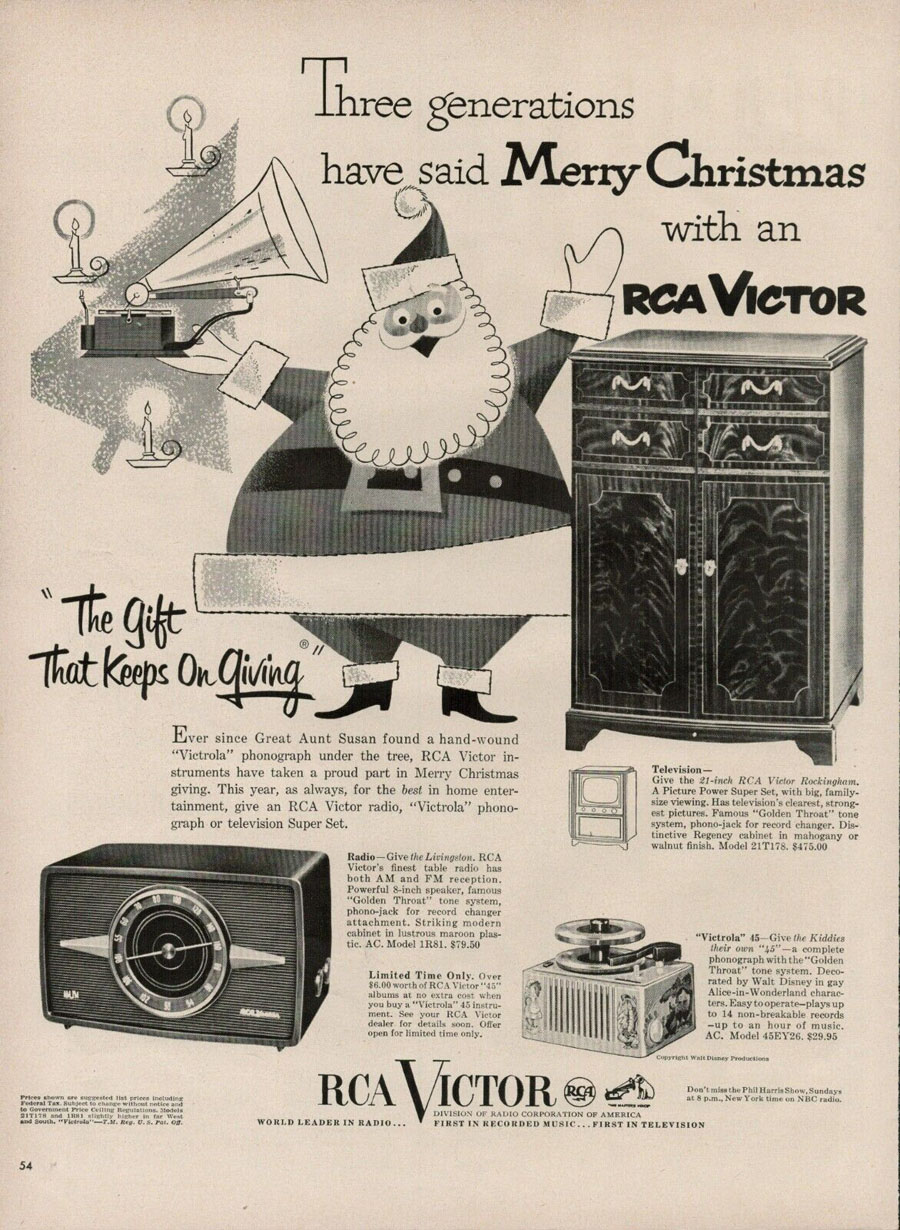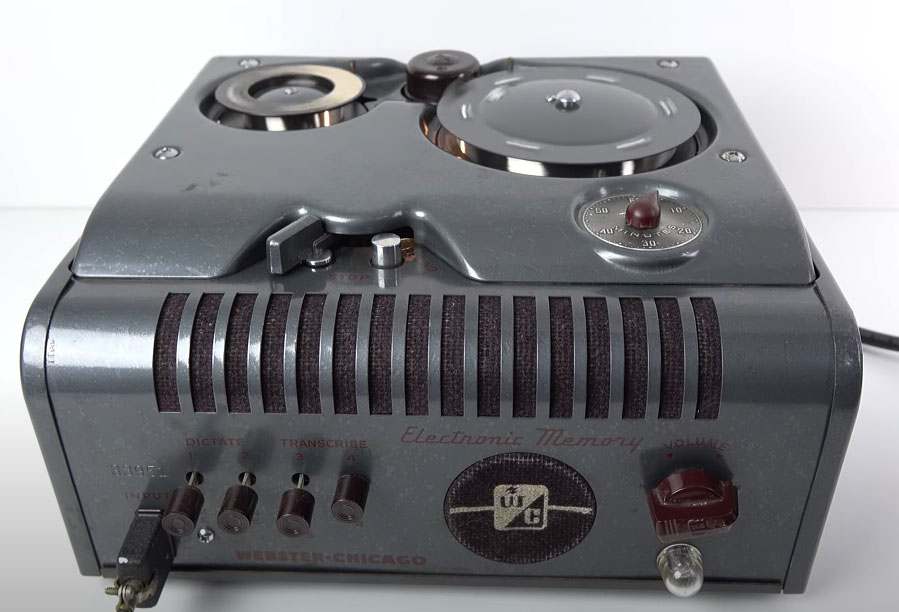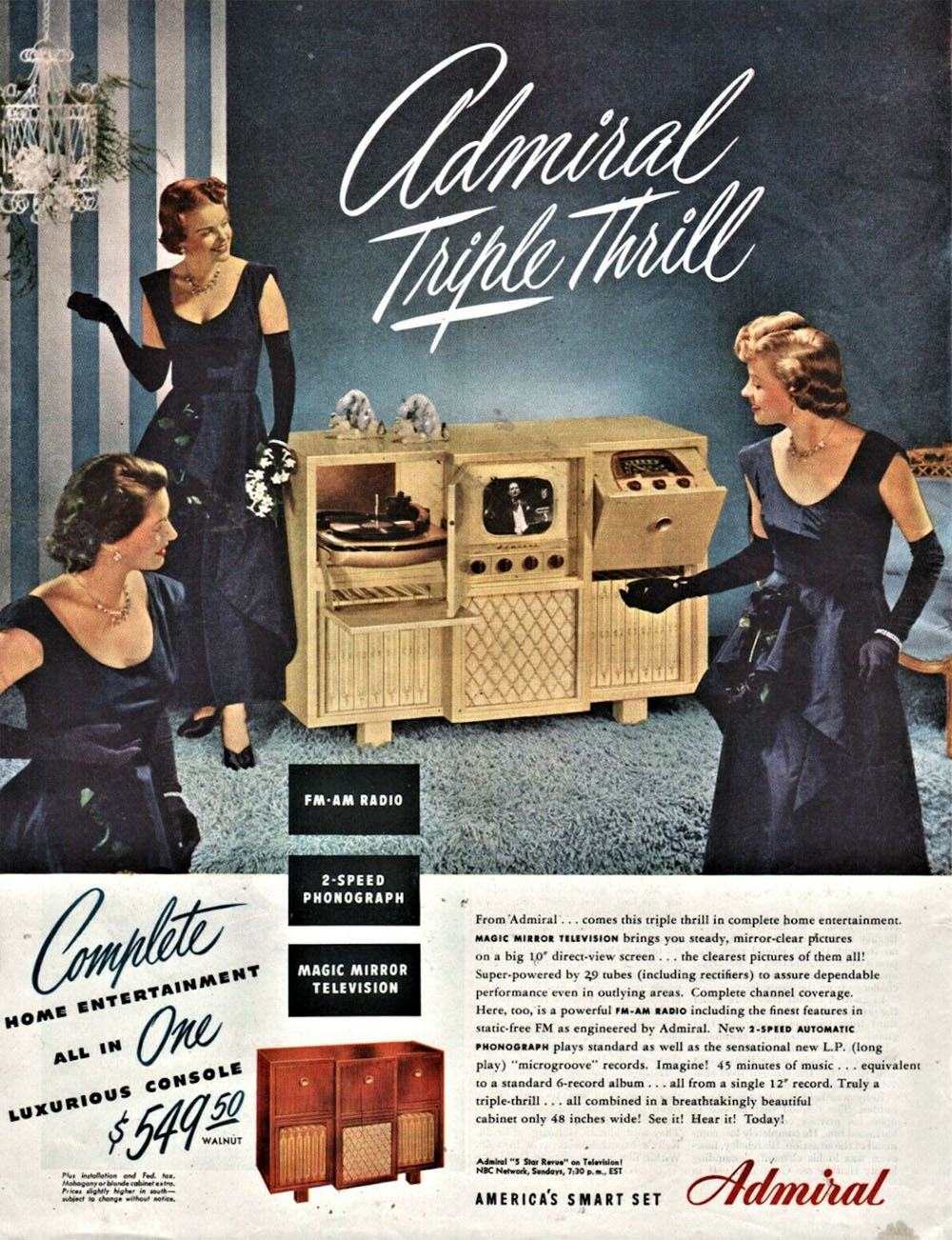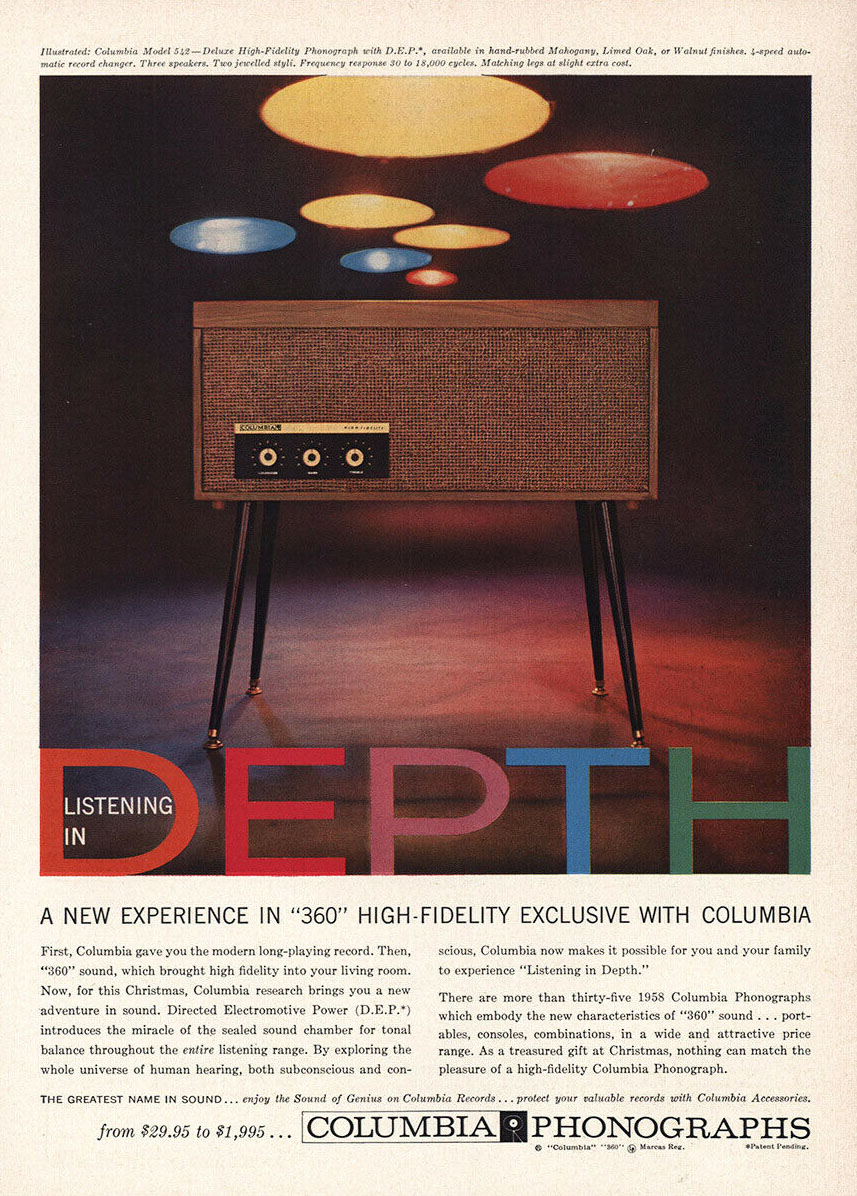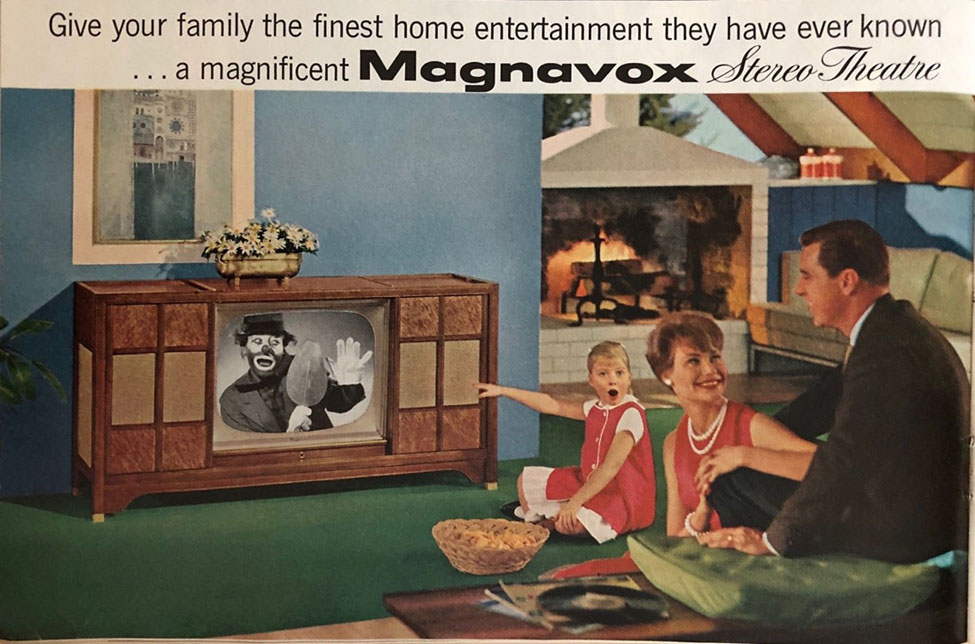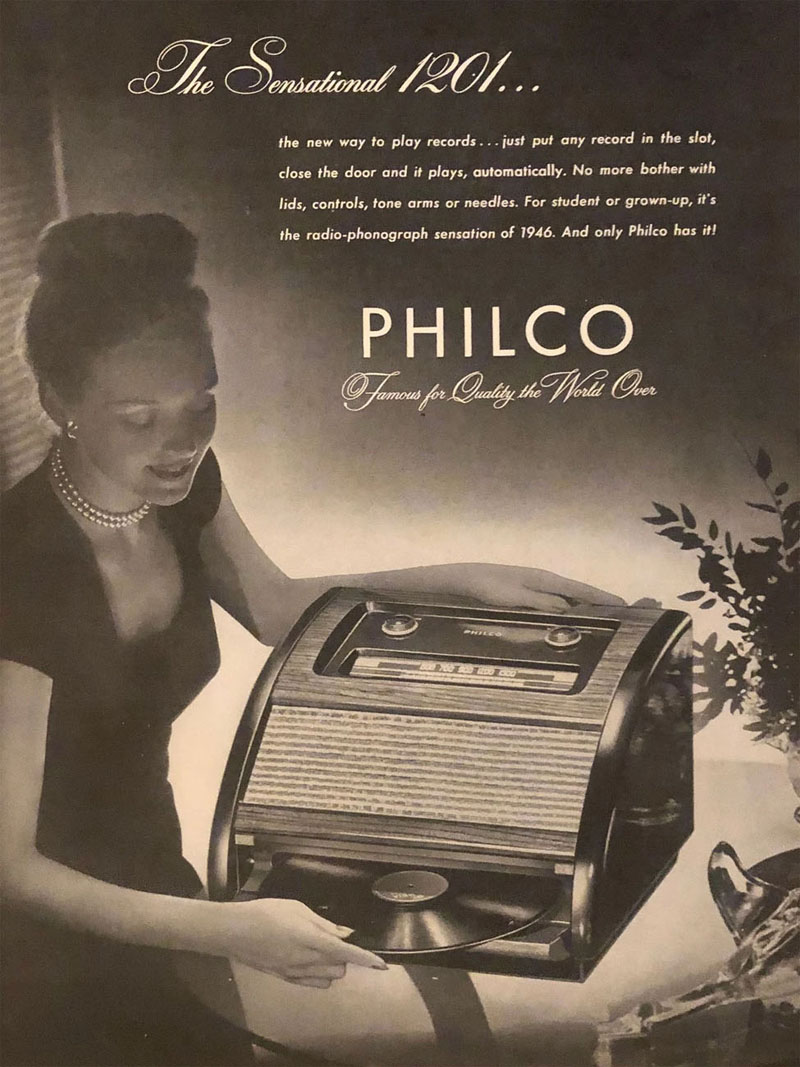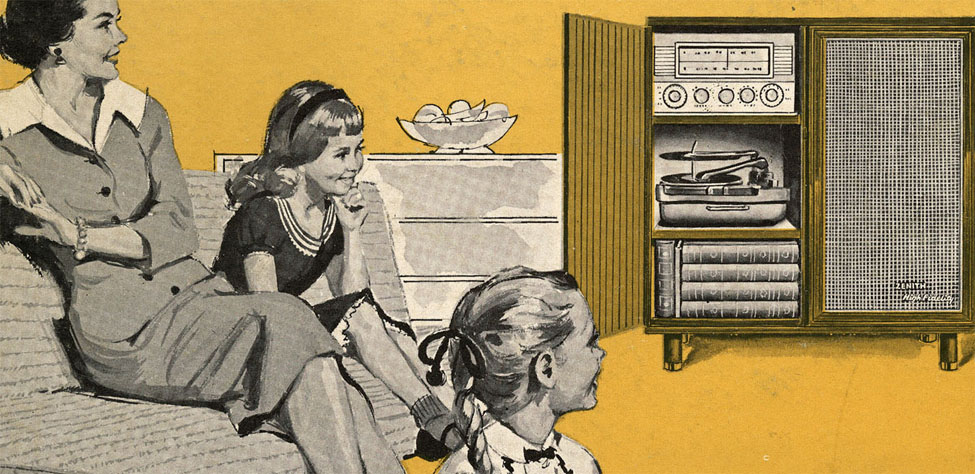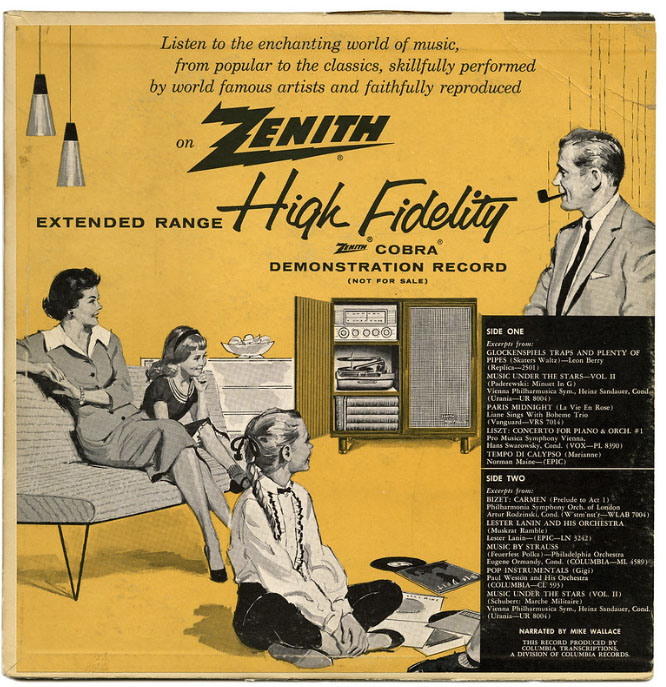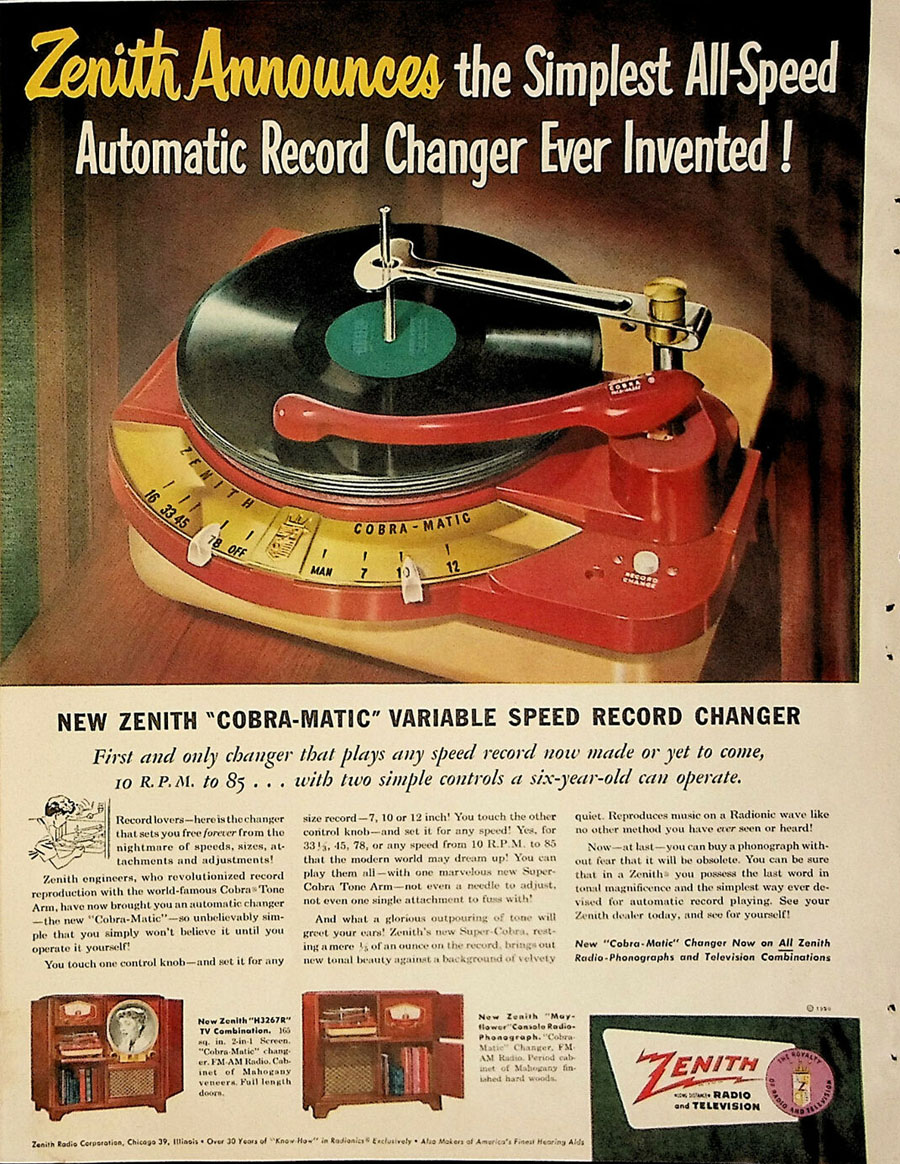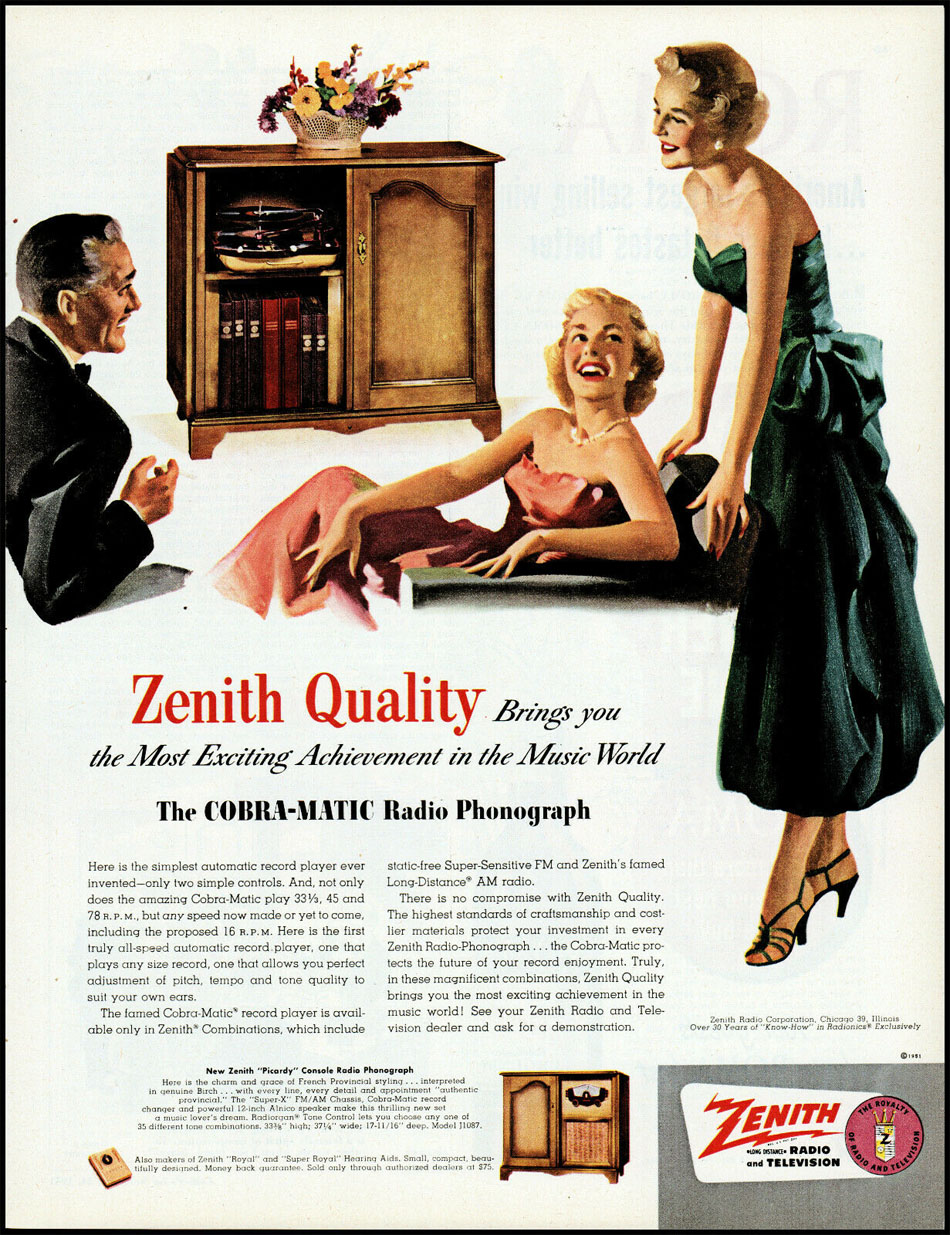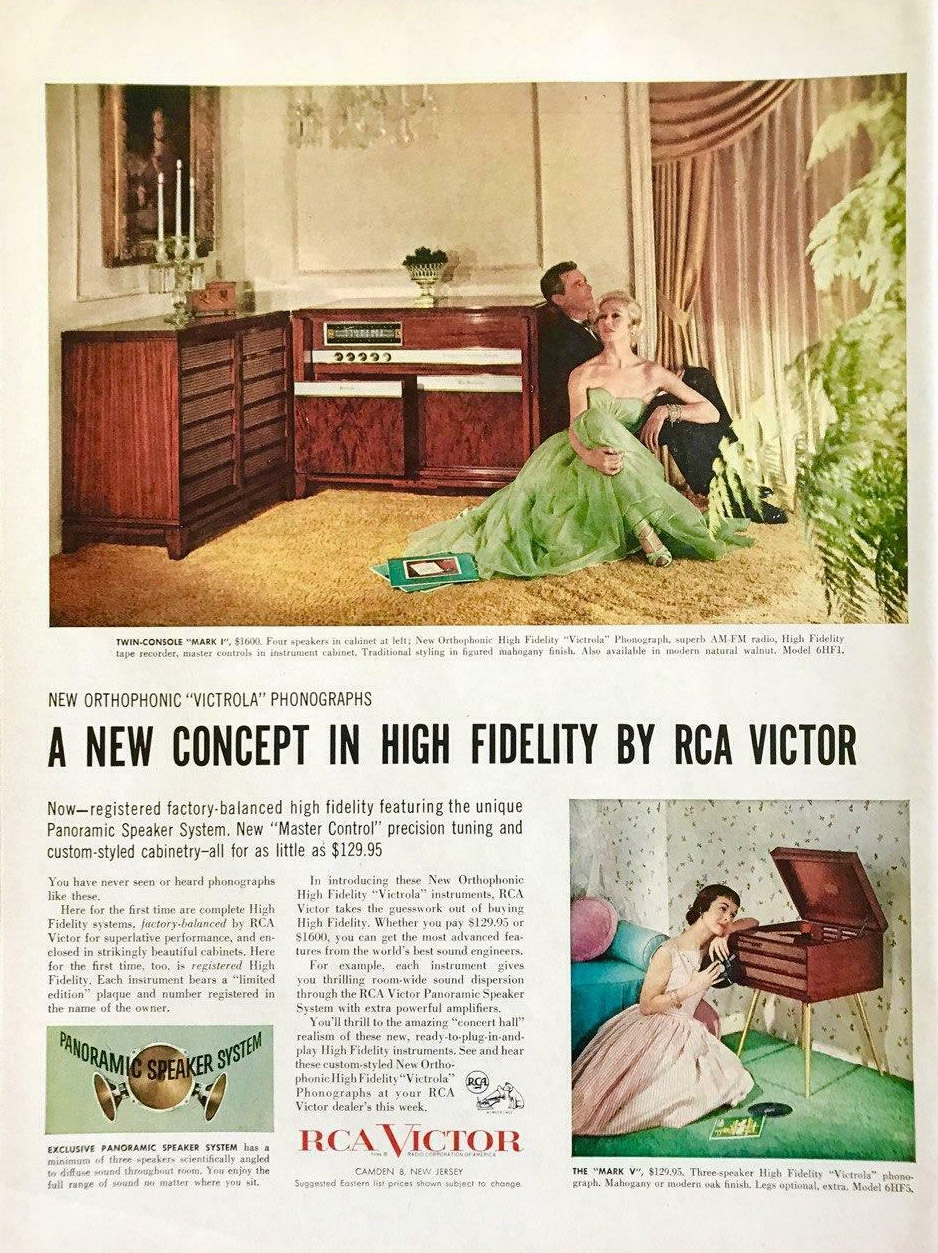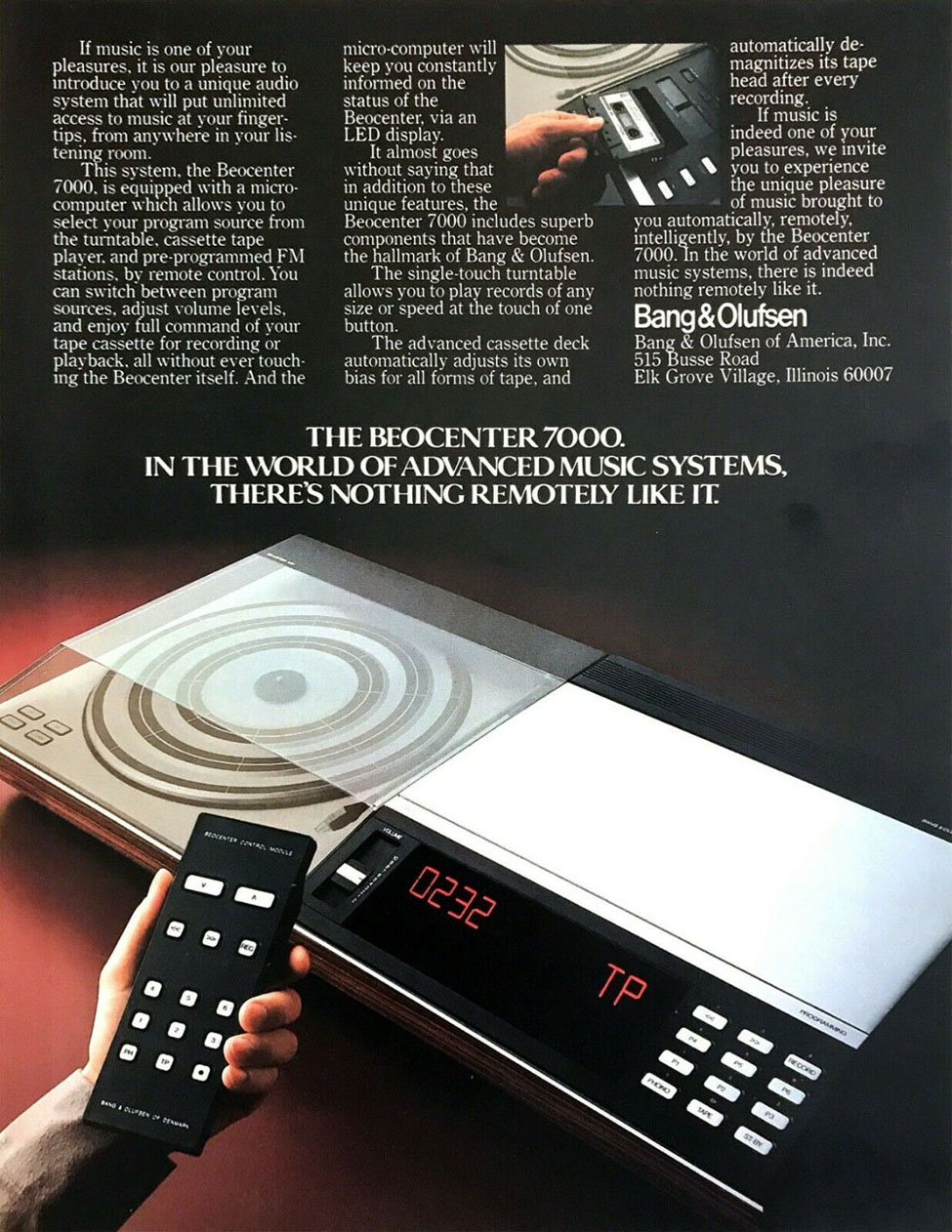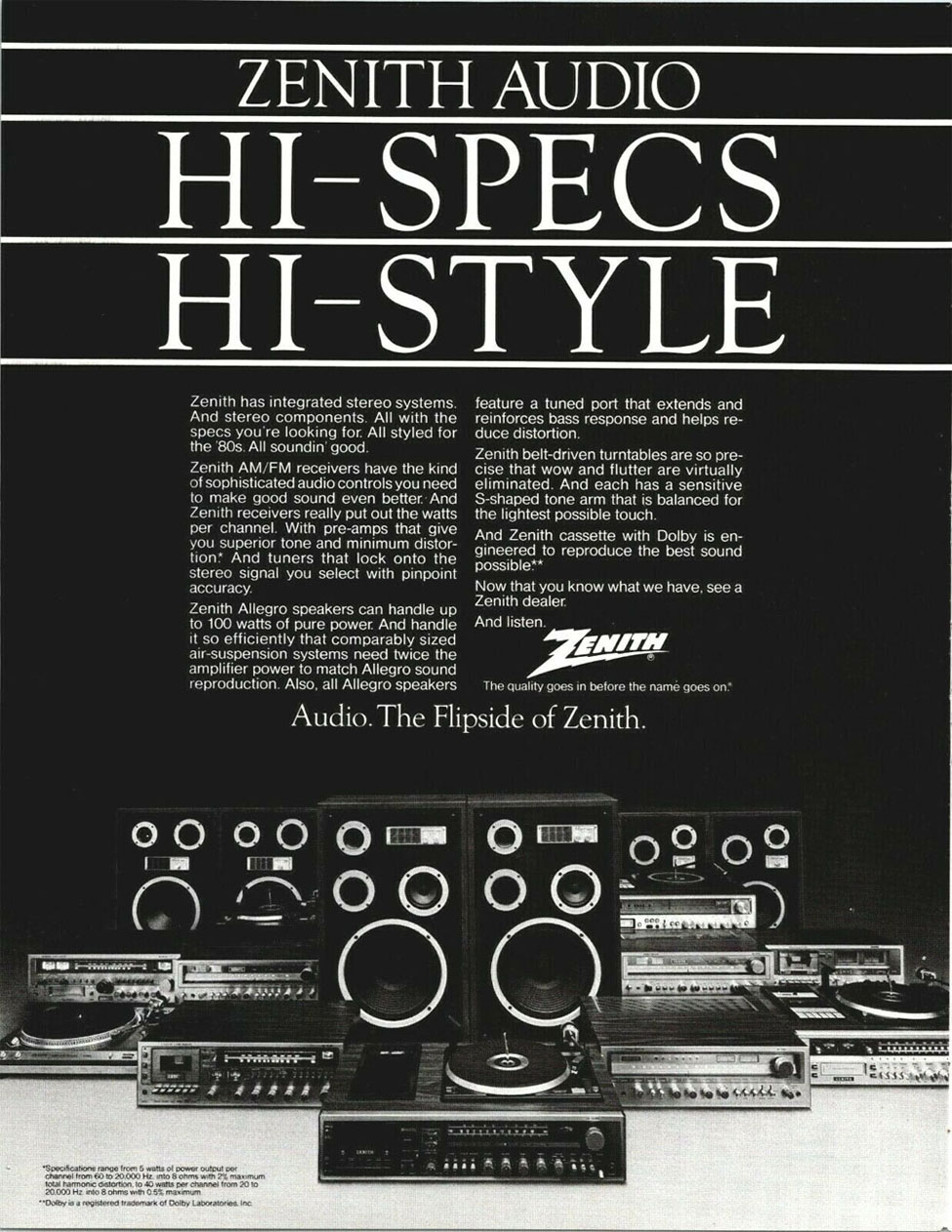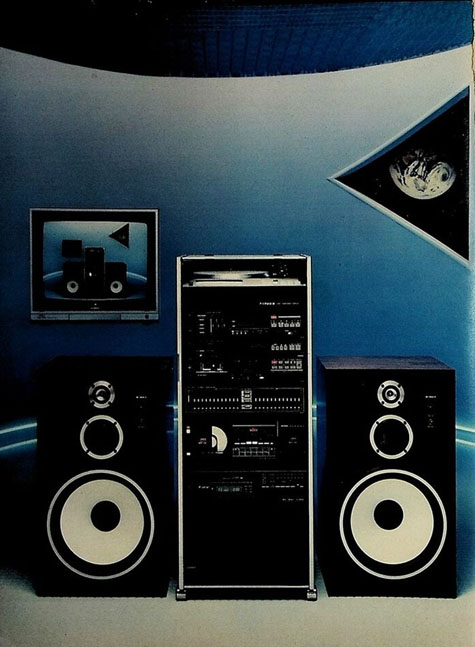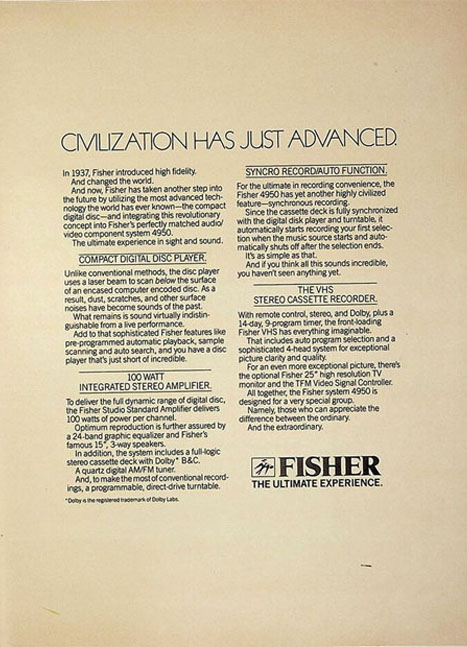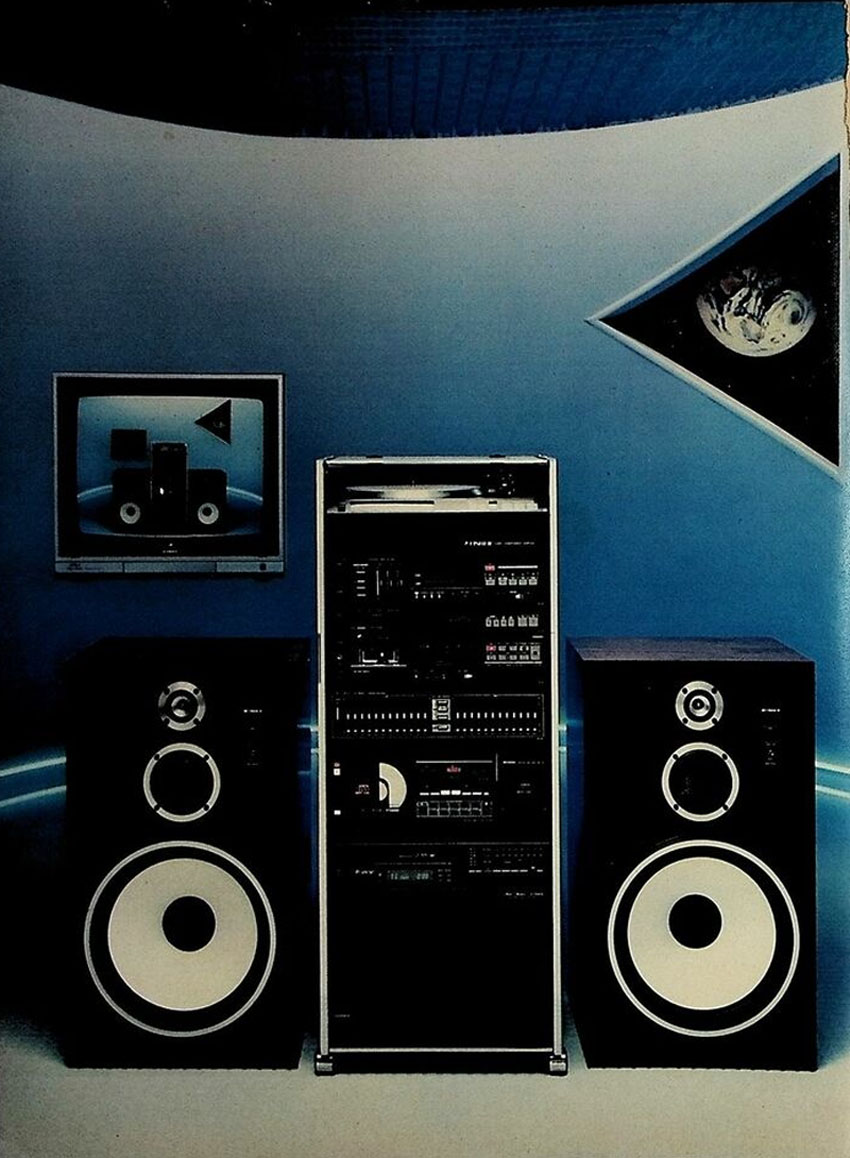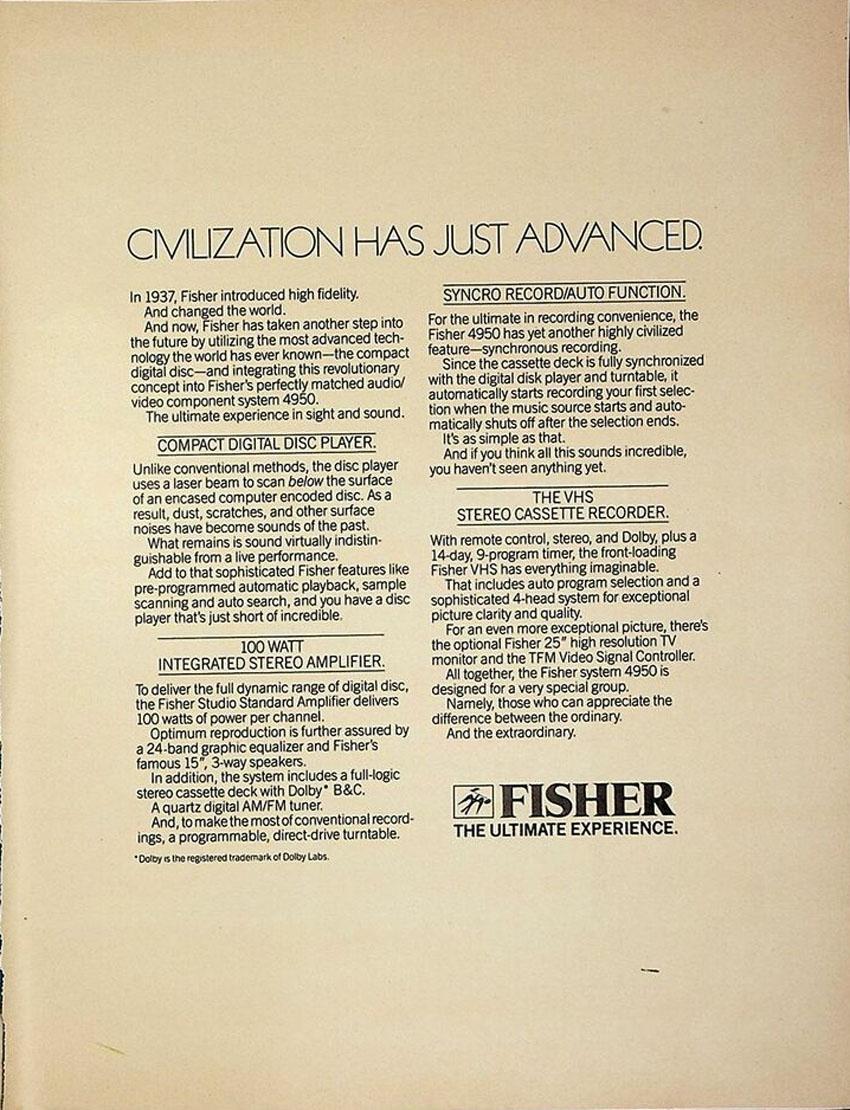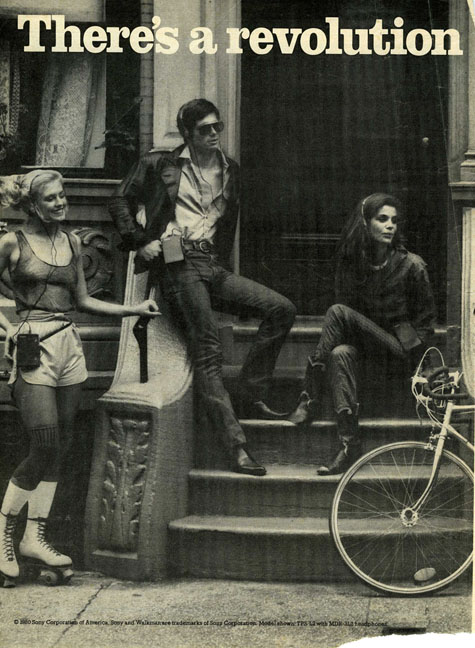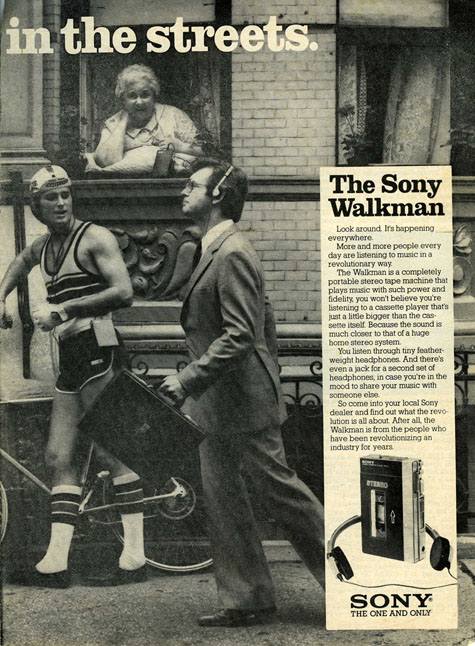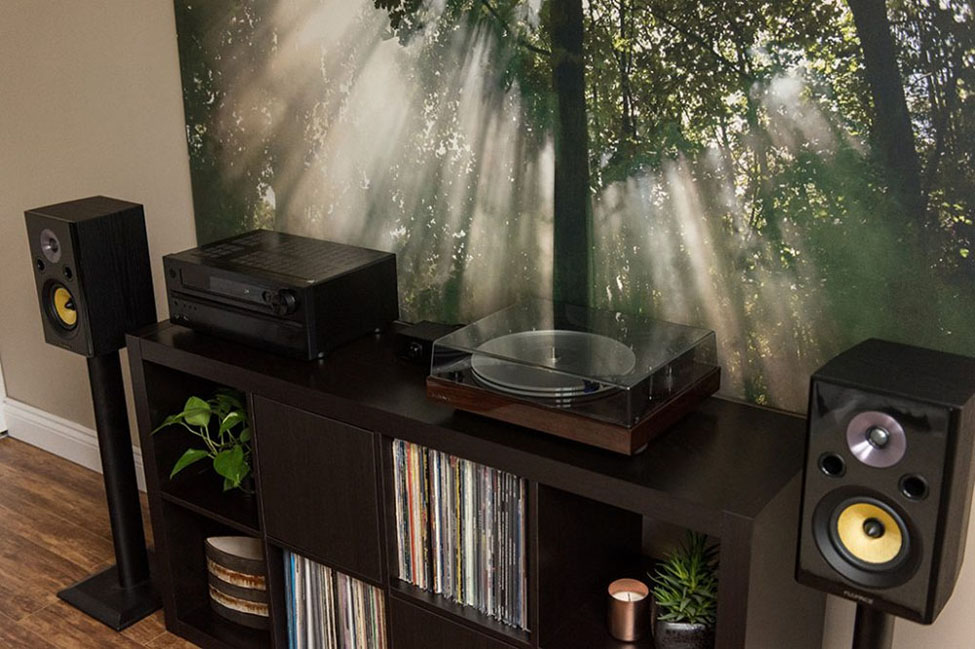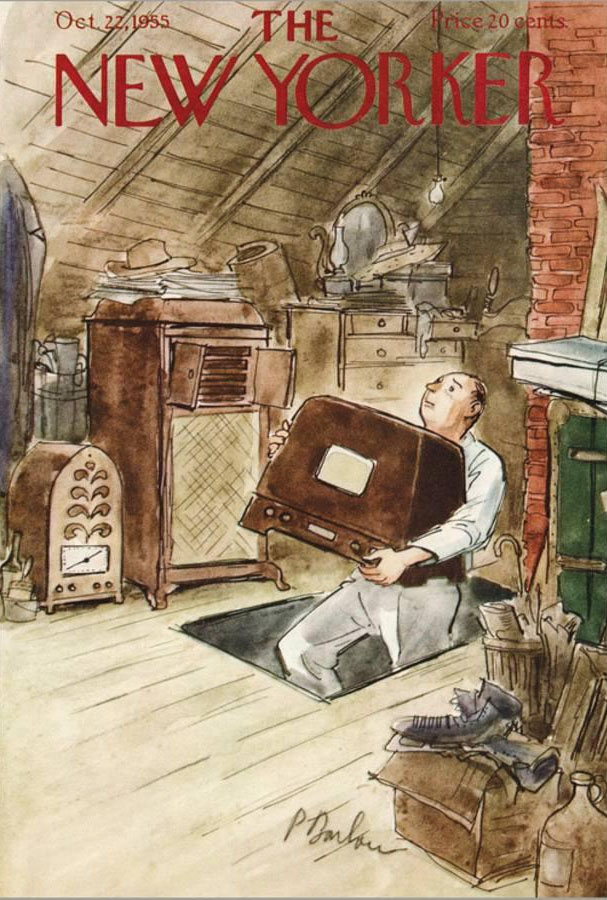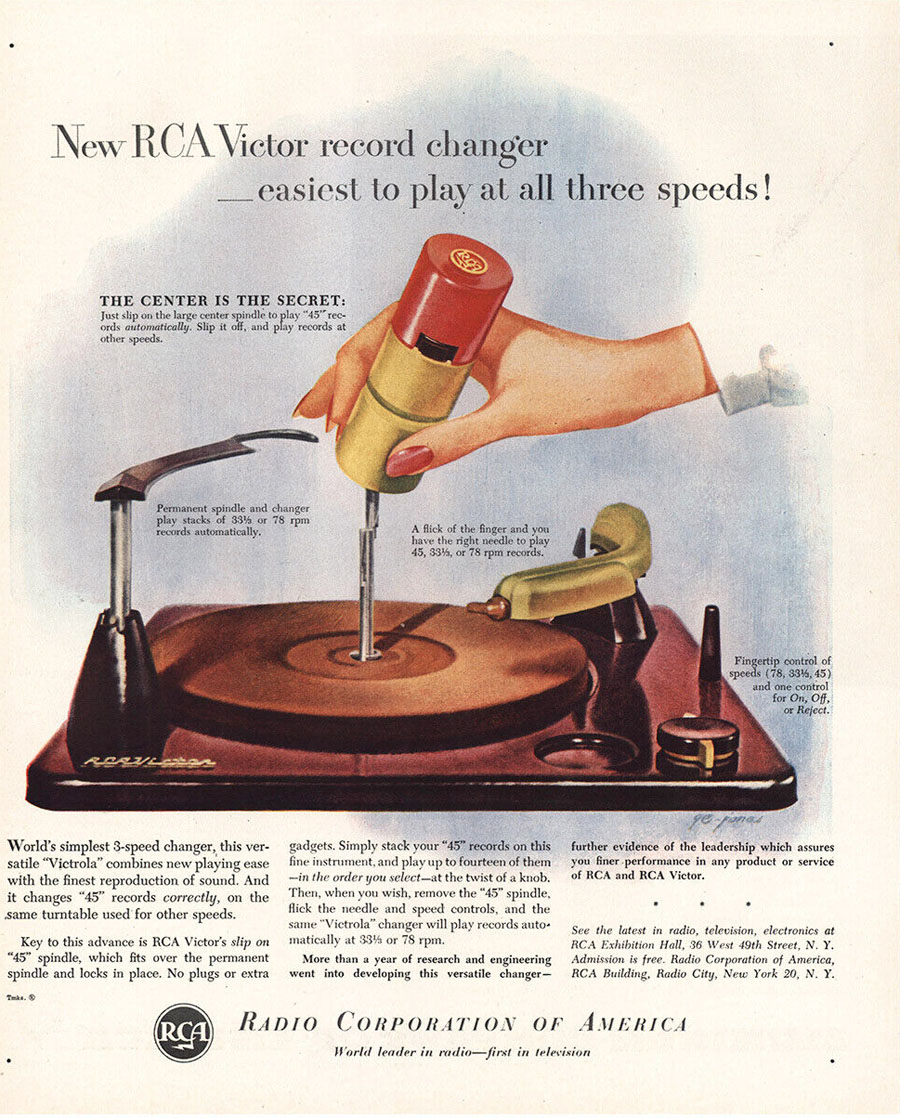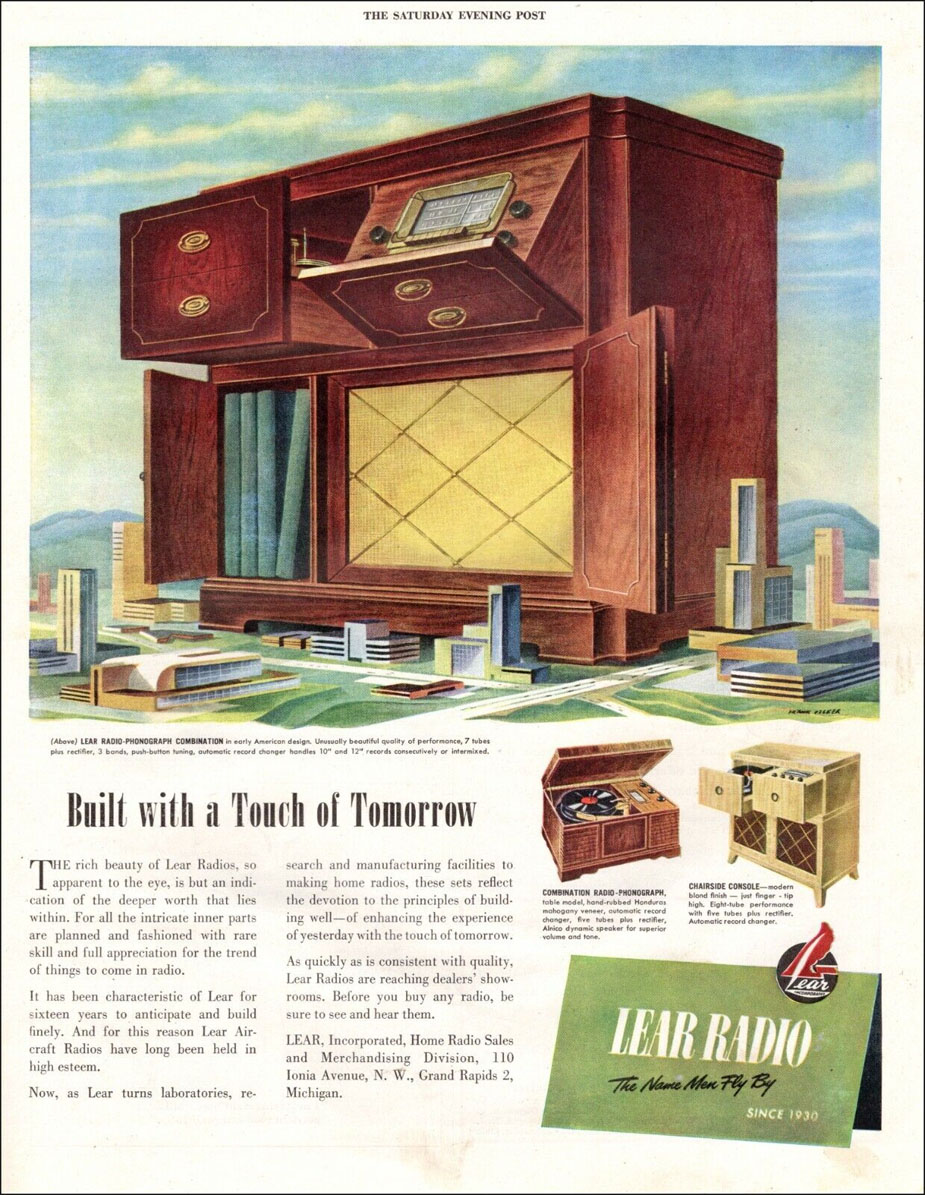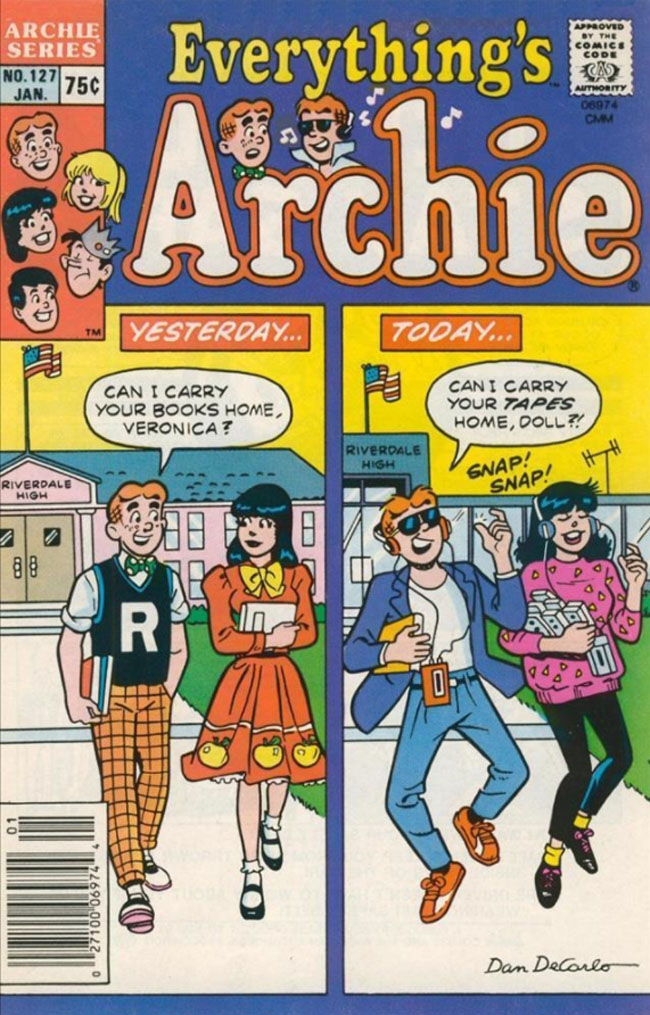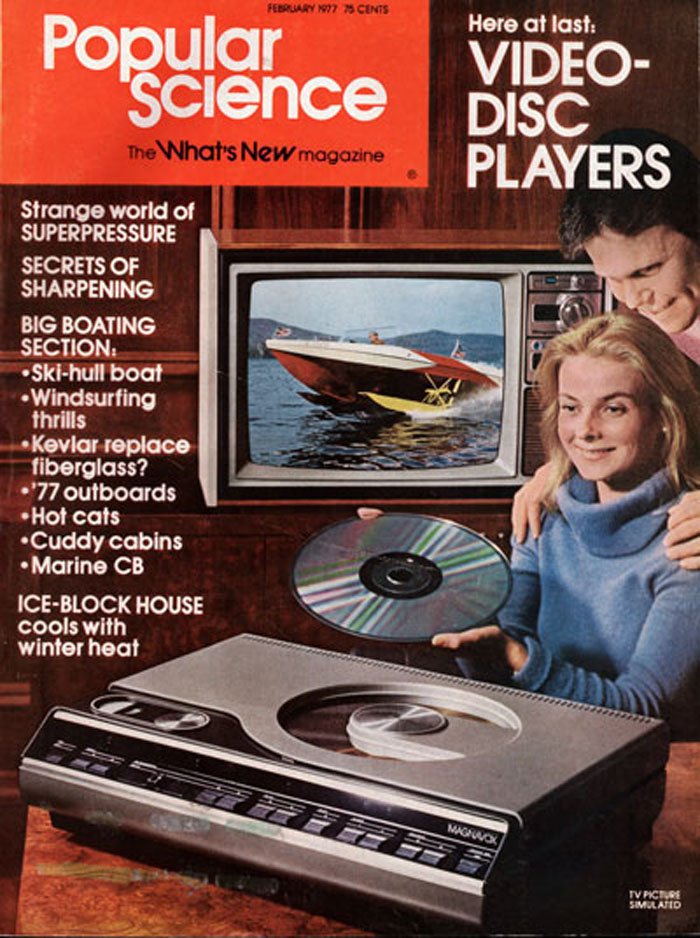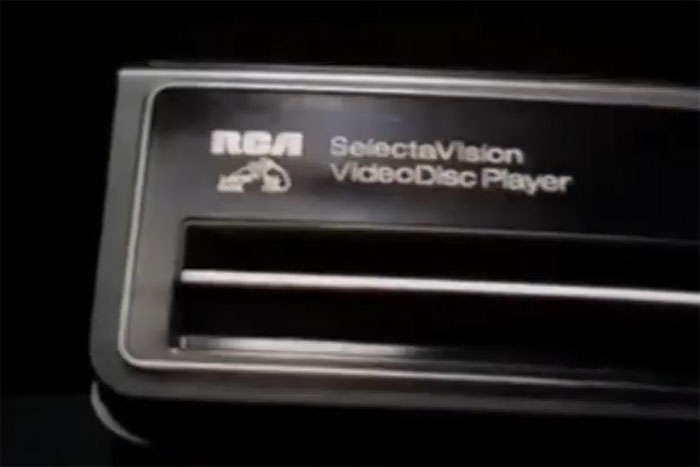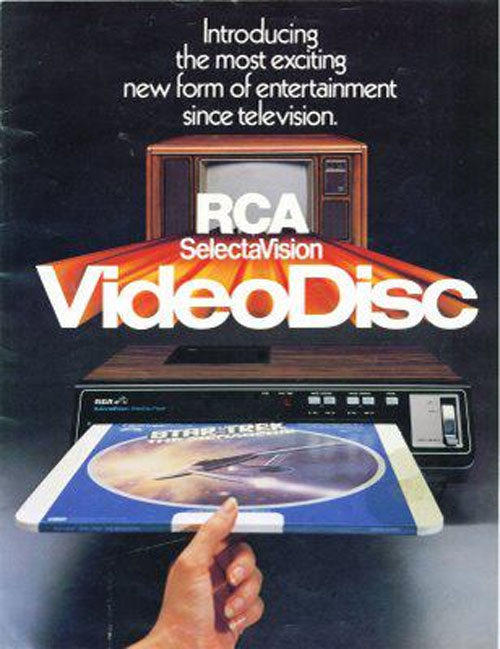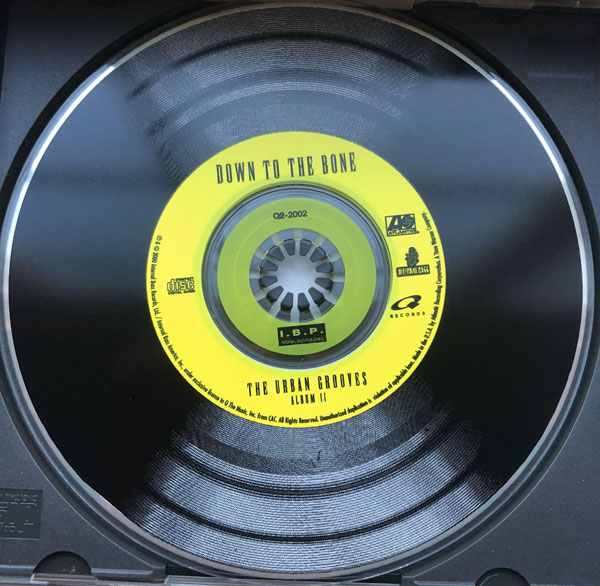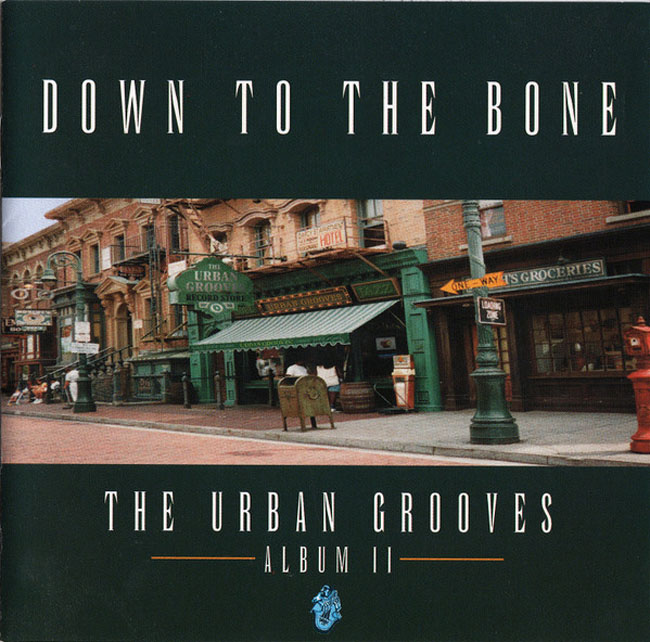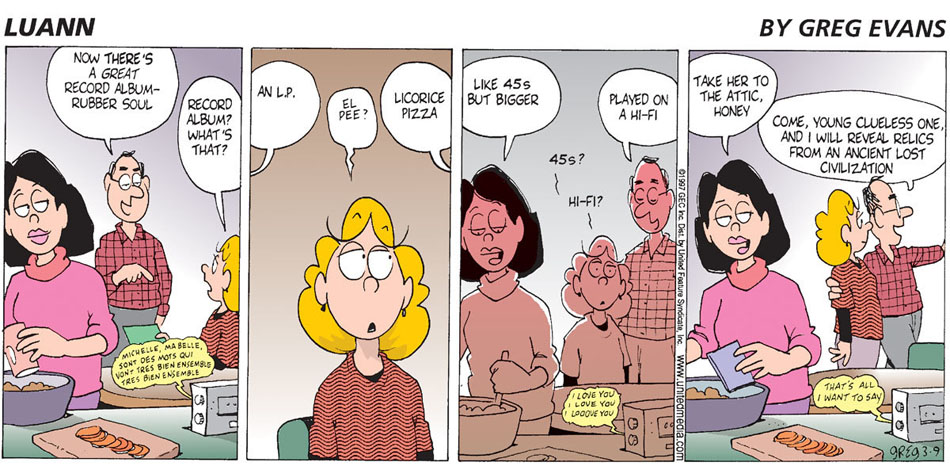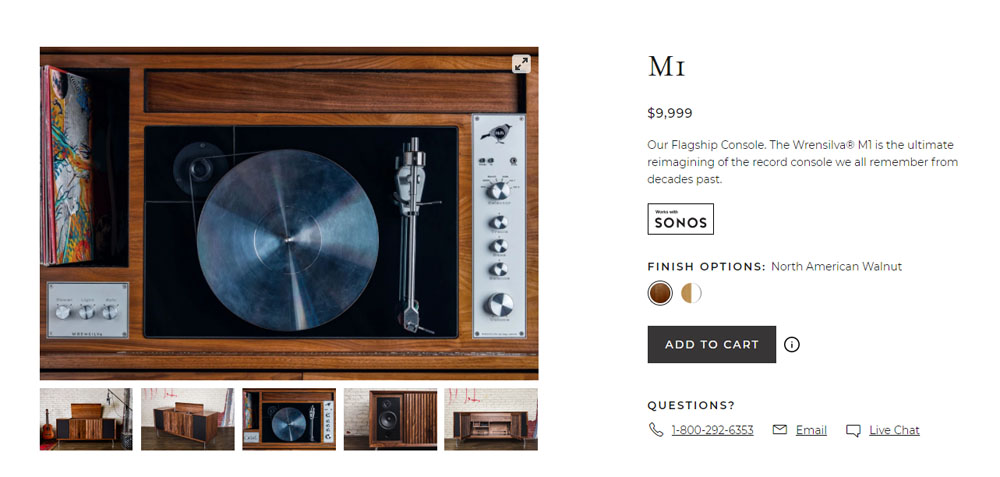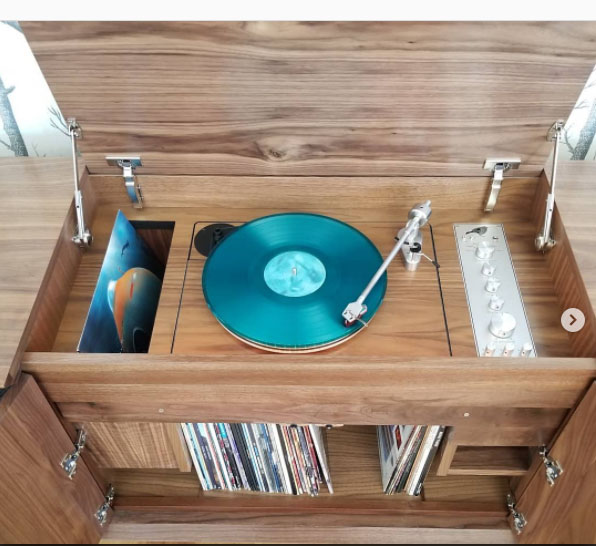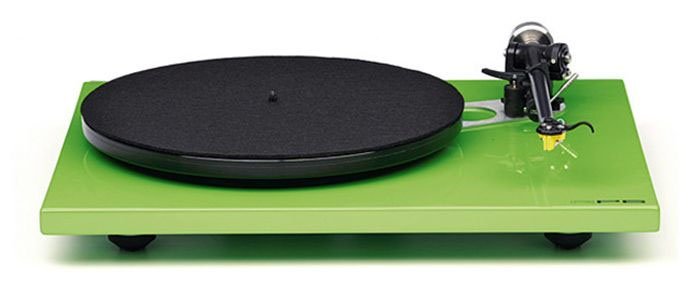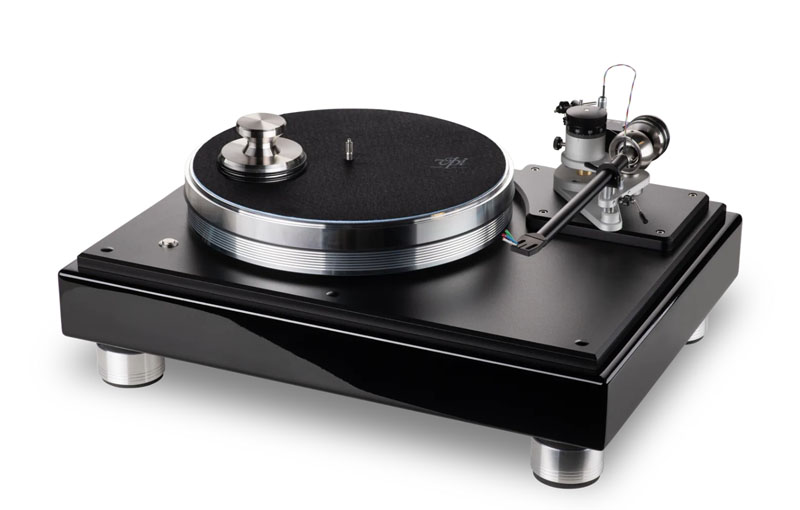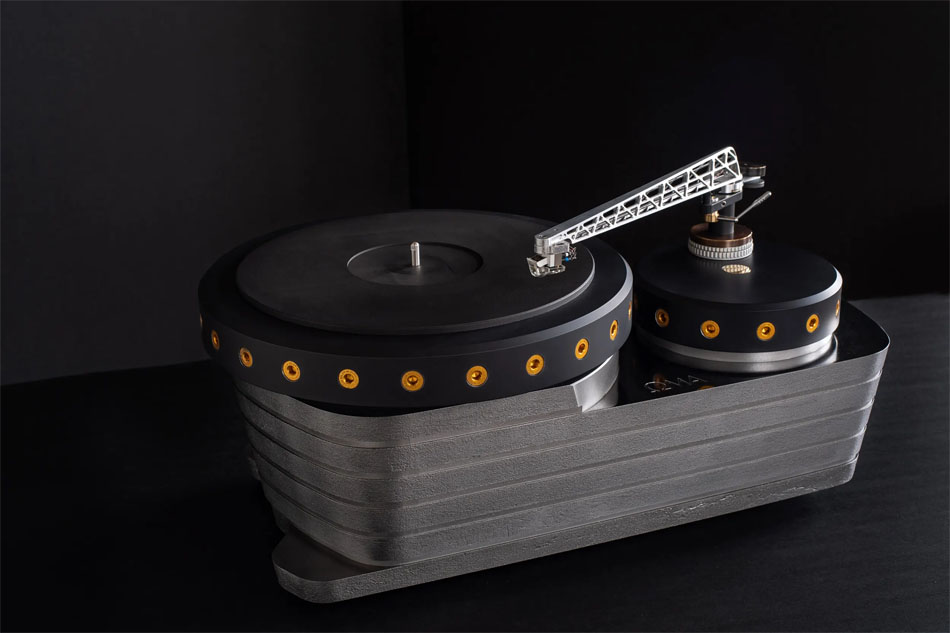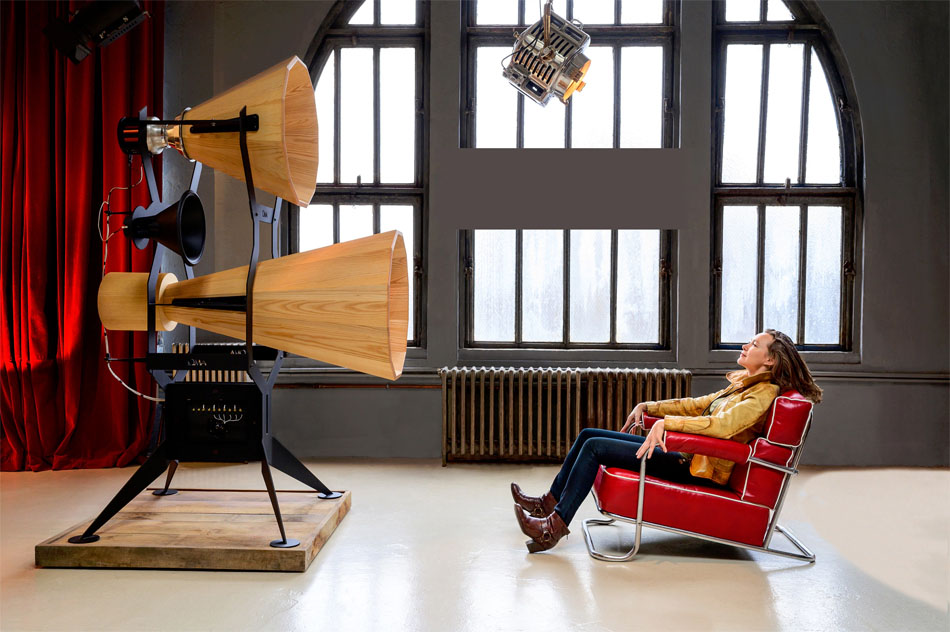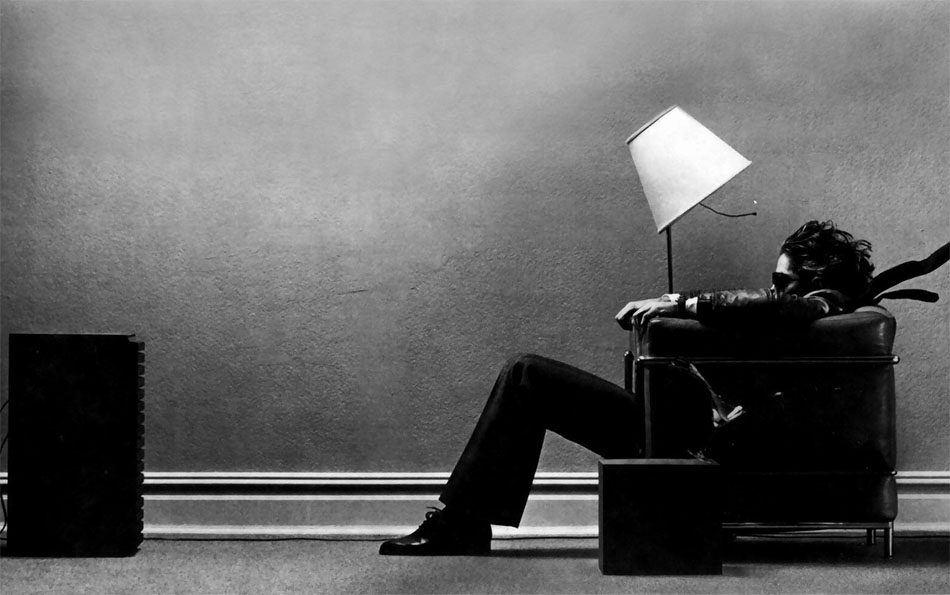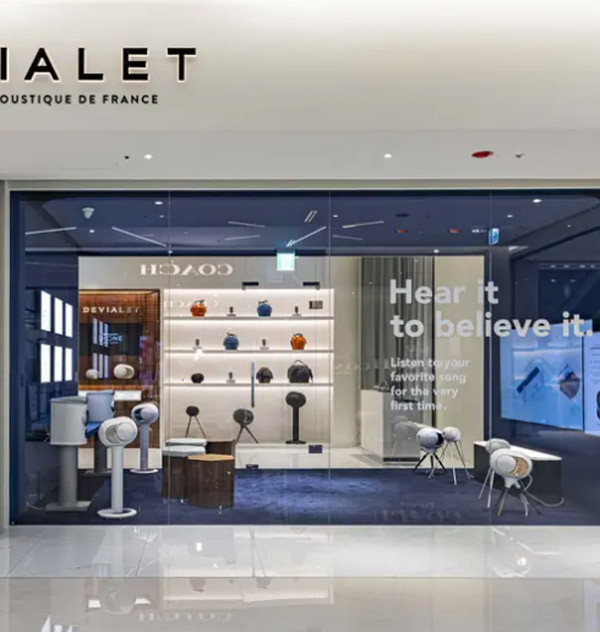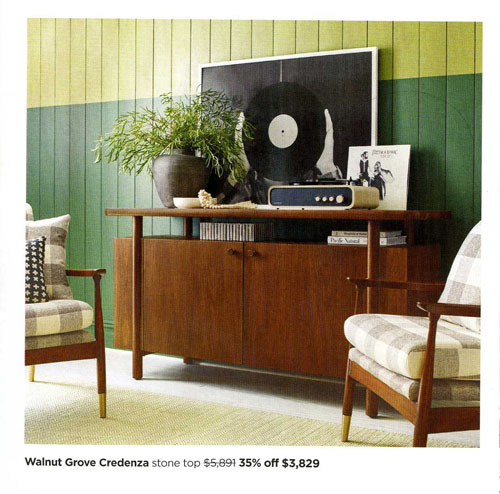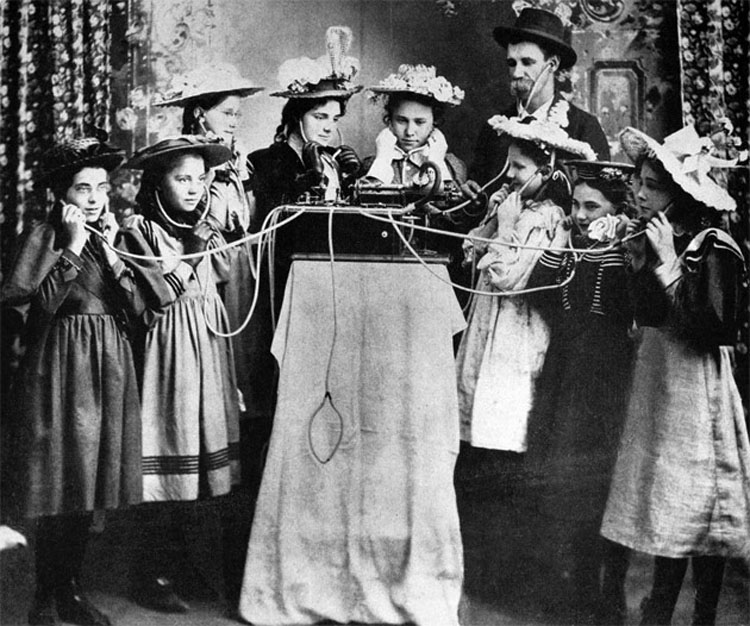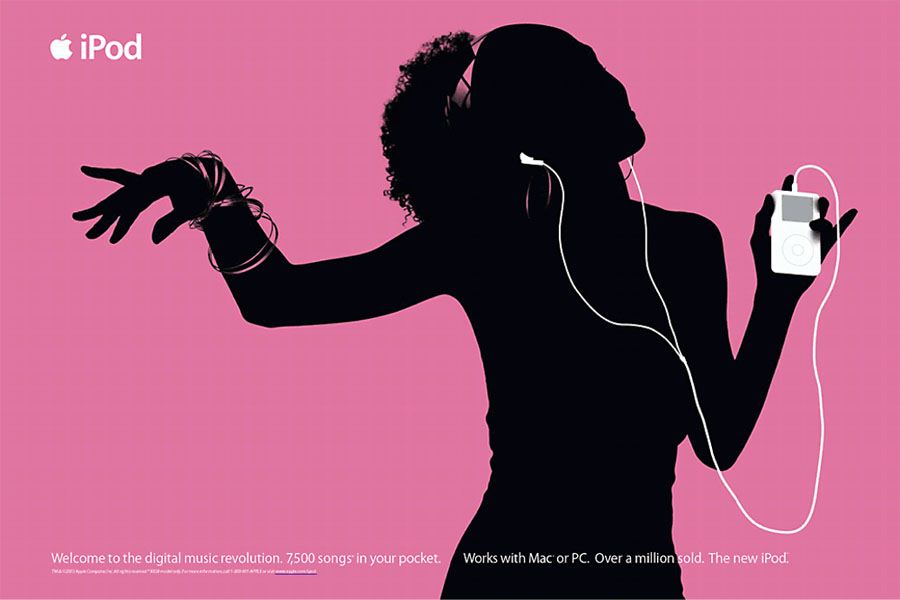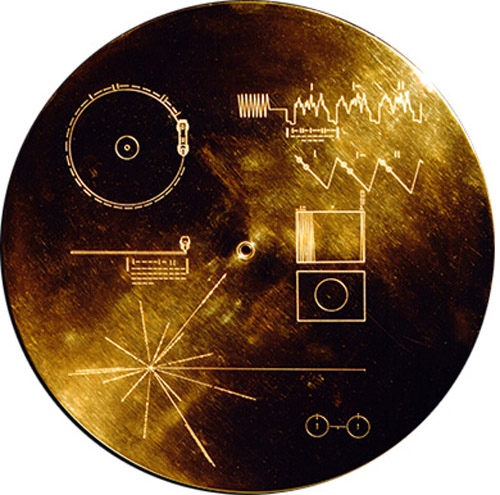The Evolution of a Revolution
A Brief History and a few Factolas
By Doug Boilesen 2019*
Recorded sound has a richly connected history of over 160 years.
This gallery, however, is not a comprehensive timeline of its revolution or evolution. Instead, a few examples of ephemera and text illustrate some of the important changes during the phonograph's history and its consumer life. This includes the relationship of the phonograph with later sound delivering devices that were introduced after the phonograph. For example, in 1925 the Victrola and Radiola were "combined in one beautiful Credenza cabinet" and in 1948 the phonograph, radio and television were combined to create a "Triple Thrill" for home entertainment.
Sound recording was actually invented twice, first by inventor Edouard-Léon Scott de Martinville in 1857 France with his invention of the Phonautograph, the earliest known sound recording device.
Twenty years later, with the completion of the Phonograph by Edison at his Menlo Park Laboratory in the United States on December 6, 1877, the social, cultural and literal revolution of recorded sound can be said to have officially begun. Edouard-Léon Scott de Martinville had recorded sound but it was for transcription of the sound waves and not audio reproduction. Thomas Alva Edison, on the other hand, successfully captured the human voice and played it back on his "Talking Phonograph." (3)
One of the early illustrations related to Edison's tinfoil Phonograph was this full page in Harper's Weekly, March 30, 1878 which showed steps and components for "reproducing speech."
"The Phonograph," Harper's Weekly's, March 30, 1878. (Courtesy of tinfoil.com)
The Harper's Weekly illustrations featured the device which phonograph collectors call the "Brady" phonograph. The following cabinet card shows Edison seated next to that tinfoil phonograph in a photograph taken at the studios of Mathew Brady in Washington, D.C., on April 19, 1878.
Uriah Painter, Charles Batchelor and Thomas Alva Edison, April 19, 1878.
For some of the most rare and interesting pieces of ephemera related to the tin-foil phonograph visit René Rondeau's "EPHEMERA" OF THE TINFOIL ERA".
Advertising Handbill for the Edison "Parlor" Tinfoil Phonograph, 1879 (courtesy of René Rondeau).
The Perfected Phonograph
At the Edison labs "by May 1888, Edison had produced the Improved Phonograph...Intensive work followed and Edison exhausted himself frequently" but Edison and his team released the "Perfected Phonograph" (see below) in October 1888. (Allen Koenigsberg, Edison Cylinder Records, 1889 - 1912 With an Illustrated History of the Phonograph, APM Press, Brooklyn, New York, 1987. xiv.)
(Courtesy Library of Congress).
"This photograph was taken by W. K. L. Dickson at 6:00 a.m. June 16, 1888" (Charles Musser, Thomas A. Edison and his Kinetographic Motion Pictures, Rutgers University Press, 1995, p. 6.) Photograph of Edison and his Perfected Phonograph 'team' are identified as "Group of Night Workers, with Edison at the Phonograph" in The Phonogram, March - April, 1893 as follows: L-R Back: W. K. L. Dickson. Chas. Batchelder. A. Theo. E. Wangemann. John F. Ott. C. A. Brown. Front: Fred Ott. T. A. Edison. Col. Geo. E. Grouaud.
Nickel-in-the-Slot
The introduction of the coin-in-the-slot phonograph was a pivotal step towards the phonograph becoming a music and home entertainment machine. These early jukeboxes played music using cylinder records like the ones in Edison's first catalogue in 1890 which were called 'Musical Phonograms."(3A) The commercial success of these early coin-operated phonographs led to the introduction of easier to operate, cheaper, spring-powered phonographs which in the mid-1890's would be made and marketed for the home.
FACTOLA: The first nickel-in-the-slot phonograph was installed November 23, 1889, by Louis Glass inside the Palais Royale Saloon in San Francisco.In 1923 "Nickel in the Slot" was recorded as a musical novelty song. Decades later jukeboxes remain a pop culture icon in the history of listening to recorded sound.
Zez Confrey and His Orchestra recorded "Nickel in the Slot" on June 22, 1923 for Victor Records. (1)
LISTEN (courtesy of Internet Archive)
Phonographs First Marketed Specifically for the Home
The Columbia Phonograph Company introduced the Type 'G' "Baby Grand in 1894 as the first in their line of graphophones "to be produced exclusively for the home entertainment market." The 1895 "Columbia Bijou was the second model designed specifically for the home." (2). The Edison Home Phonograph Model A was introduced in 1896. (3B)
In the United States magazine advertisments announced that a revolution of home entertainment was taking place. These early spring wound phonographs advertisements had simple themes: it laughs, talks, sings and can repeat your own voice or song; it plays loudly and clearly; it was easy to operate.
"It Sings, Plays, Talks, &c.." Munsey's Magazine, September 1896
For additional pre-1900 phonograph ads visit Phonographia's Pre-1900 Trade and Magazine Ads.
In 1908 Victor ran an ad campaign questioning if you could tell the difference between a live performer and a record. "You think you can...But can you?" Victor then suggested there was one way to find out: "Why not hear the Victor for yourself?"
Geraldine Farrar was one of the opera stars featured in that "Which is which" Victor advertising campaign.
Geraldine Farrar, Colliers, 1908
This suggestion that the "live" could be replaced by a recording would be repeated in many phonograph ads and later repeated by descendent technologies like Memorex Recording Tape where it was cleverly asked "Is it live, or is it Memorex?"
Is it live, or is it Memorex? 1974
In August of 1906 a significant change took place that would refine and redefine talking machines in the home. A new product-line called the Victor-Victrola was introduced and the talking machine's external horn was gone -- moved inside the cabinet. In so doing the Victrola became fine furniture and a musical instrument. In popular culture its model name "Victrola" would also become a generic term for all talking machines, like Kodak for cameras and Kleenex for tissues.
By the 1920's the phonograph could be considered the definitive home entertainer. Ads showing Caruso and the greatest artists of the world coming into your home made the point that the Victrola was an instrument unparalleled in providing the best in home entertainment.
Revolution and Evolution of the Phonograph - Brands and Styles
A Revolution in the art of the Phonograph, Pathé Frères Pathéphone, April 1913
In 1922 the Strand Phonograph Company advertised in the phonograph trade magazine The Talking Machine World how talking machines had undergone an evolution of changes and styles in 25 years and how their Strand Consoles were part of the unmistakable trend defining the Modern style of today.
The Talking Machine World, April 1922
This 1968 advertisement used the phonograph industry as an example of how products can "start in the humblest of ways" but then "lively competition among national advertised brand names" makes that simple ideas "grow into something big." Brand Names Foundation, Inc., 1968.
The evolution of recorded sound created hundreds of phonograph companies. Many phonograph companies used "phone" "graph" or "ola" in their branding and those are identified in their respective Phonographia Factola galleries.
The Radio
The fact that the radio could bring music to a listener through the air and at no cost (except for the price of the radio) introduced a new revolution for listening to music and words.
Lee DeForest broadcasting Columbia phonograph records, 1916 (Source: The Music Trade Review, November 4, 1916, p. 52 - Wikimedia
The radio magically delivered sound to popular culture listeners and like the phonograph invented by the Wizard of Menlo Park, the radio brought the world of entertainment to the home. But the radio also added information for its listeners and there was no intermediate step required such as purchasing a record for each song. The telegraph had increased the speed of delivering information using its electrical transmission of dots and dashes that could be translated into individual telegrams or printed in newspapers across the land. But it was the radio that for the first time delivered audio information to countless listeners, directly and faster than any previous technology, with stories, headlines and "breaking news."
"Breakin' News," Barney Google and Snuffy Smith, by John Rose, The Lincoln Journal, November 7, 2025
By 1929 the radio had taken the lead in the home entertainment business with Edison ending his production of phonographs and the Victor Talking Machine Company being purchased by the Radio Corporation of America.
The "flick the switch and dial the number" were the new open sesame's for enjoying the stage of the world in the home.
Some in the phonograph industry had seen the future and around 1922 had started combining the phonograph with the radio into one unit to get the best of both worlds. As an RCA advertisment noted in 1924 this was accomplished "without an extra piece of furniture."
The Switchboard of a Nation "linking you to the wonder-world of words and music", Temple Radio, 1929.
Radio-Phonograph Combinations
With the growing popularity of radio in the early 1920's combination sets of radios and phonographs were first put together by some small manufacturers around 1922. The Emerson Phonograph Co. is said to have "introduced the first radio-phonograph combination sold in the United States." The Radio Corporation of America (RCA) in 1924 offered their Radiola IX as a radio that could fit "snuggly inside your phonograph cover!" Brunswick put the Radiola IX in their phonographs at the end of 1923 and Sonora was also an early seller of combination Radio-Phonographs. "
In 1929, RCA purchased the Victor Talking Machine Company, then the world's largest manufacturer of both records and phonographs, including its popular showcase Victrola line," and RCA Victor was born which would make RCA Radiola-Victrola sets. (Wikipedia)"
The Radiola IX was made to fit into a console or upright phonograph. No extra piece of furniture required to have a radio and a phonograph. The Ladies' Home Journal, March 1924
Fada Phonograph Panel Units - Add it to the phonograph or buy the Fada Radio and Phonograph Combination Model, 1925.
Add Federal to your Phonograph, 1925.
The new Orthophonic Victrola and Radiola Super-Heterodyne were combined into one cabinet in 1925 by the Victor Talking Machine Company. The Ladies' Home Journal, November 1925.
THE COMBINATION Radio-Phonograph - An extraordinary musical instrument
THE COMBINATION Radio-Phonograph, Temple Templetone Radio Brochure, 1929
Phonograph-Radio with phonograph as an add-on
"At the Push of the Button" Radio Shows like W.C. Fields and Charlie McCarthy, Electric Tuning, Sonic-Arc Magic Voice...Magic Brain...Magic Eye and an optional RCA Victor Armchair Control are featured in this September 20, 1937 RCA Victor ad in Life magazine. The phonograph only has a small section in the ad showing an RCA Victor Record player which "quickly and easily attaches to any modern electrically operated radio."
"The Magic Key of RCA was an American variety radio show that featured an unusually large and broad range of entertainment stars and other noted personalities. It was on the NBC Blue Network from September 29, 1935, until September 18, 1939." - Wikipedia
"Good-bye, Needle Scratch! No More Needle Changing!" Greatest invention for phonographs since the record-changer! Exclusive with Crosley!
"The Rainbow of Sound - A Double Engineering Achievement", Crosley Glamor-Tone Radio and Phonograph Combinations, 1941.
"A perfect combination -- this great new radio-phonograph" Look magazine, 1946.
"The greatest improvement in record playing since the invention of the phonograph." Admiral FM-AM Radio-Phonograph, 1947.
Three Generations with the Victor - "The Gift That Keeps On Giving," Life, December 17, 1951.
Wire Recorders
Another recording technology that gained some popularity during the decade after World War II was the wire recorder.
"Baby's first words can be caught and locked away" said a Popular Science magazine article in January 1946 noting that the wire recorder "may well become a camera of sound." One of Edison's predictions for the phonograph in 1878 expressed the same theme under Edison's probability he listed as Family Record which stated that "for the purpose of preserving the sayings, the voices, and the last words of the dying member of the family -- as of great men--the phonograph will unquestionably outrank the photograph."
Webster-Chicago Model 18 Wire Recorder (ca. 1953)
The wire recorder "may well become a camera of sound. Baby's first words can be caught and locked away." Popular Science, January 1946.
Radio-Phonograph-TV Combinations
Combination Radio-Phonographs would continue to be manufactured into the 1940's when television was added as a new component to home entertainment consoles making it what Admiral would call a "Triple Thrill" and "Complete Home Entertainment all in one luxurious console."
Admiral's Triple Thrill FM-AM Radio-Phonograph-Television Set, 1948.
Columbia's "360" High Fidelity Sound, 1957.
Magavox Stereo Theatre in your home, 1962.
Hi-Fi and Component Systems
From the 1950's and into the 1970's the home entertainment center combining TV, stereo high fidelity phonograph and FM/AM radio moved into living rooms. Component stand-alone Hi-Fi systems were also used in homes during this time period.
This painting titled "Hi-Fi" from the series "Homelife in America" by Haddon Sundblom features friends with cold glasses of beer listening to state-of-the-art music from the component high fidelity phonograph system while another record is being selected. The ad and its image, sponsored by the United States Brewers Foundation, is extracted from a 1956 Collier's magazine ad.
Philco Radio-Phonograph, "The New Way to Play Records" 1946.
1951 Zenith High Fidelity Demonstration Record.
1950 Cobra-matic Variable Speed Record Changer, Zenith.
1951 Zenith Quality - The COBRA-MATIC Radio Phonograph.
"You have never seen or heard phonographs like these."
New Concept in High Fidelity by RCA Victor - Panoramic Speaker System, 1955.
Beocenter 7000, Turntable, Cassette Tape, and FM Radio, Bang & Olufsen 1971.
Stereo Systems
Stereo System Components - Turntables, AM/FM Stereo Receivers and stand-alone Speakers continued to be popular from the 1970's and on-ward.
The Bicentennial "Everything System," Radio Shack Catalog, 1976.
Zenith Integrated Stereo Component Systems, 1980.
Civilization has just advanced.
"In 1937 Fisher introduced high fidelity. And changed the world. And now, Fisher has taken another step into the future," the Compact Disc and introduced this "revolutionary concept" into Fisher's "ultimate experience of sight and sound." Fisher ad, 1983.
Fisher The Ultimate Experience. 1983.
Set your life to music - Sony's Interlock Sound Systems with Sony's Direct Drive turntable, 1980.
Another revolution in playing recorded sound - The Sony Walkman, Time, November 10, 1980.
Consumer component multi-channel system with turntable, 2021 (Courtesy of Fluance - The Ultimate Guide to Turntables).
Evolution, Change and the Phonograph's Revolution Continues OnHome and personal entertainment devices with dependencies on recorded sound have a consumer cycle of being introduced, purchased and replaced. Through the decades previous "state of the art" devices have commonly moved to the attic, to museums, or to the dump.
The New Yorker cover by Perry Barlow with the an earlier model of the TV joining the radio and the Victrola, October 22, 1955.
The New Yorker cartoon by George Price, 1950 featuring a seemingly future proof system 'in case anything new is invented."
RCA 3 -Speed Change, 1952.
Built with a Touch of Tomorrow, The Saturday Evening Post, 1946.
Admiral Radio Phonograph "Can't Go Out of Date!" National Geographic, September 1948.
Can I carry your tapes home...?
Everything's Archie comic, Archie Publications, January 1987.
Popular Science magazine in February 1977 announced the upcoming release of video-disc players. Two competing systems, SelectaVision and DiscoVision were featured as the soon to be new state-of-the-art formats for home entertainment. RCA's SelectaVision was an analog disc playing machine using a Capacitance Electronic Disc (CED) that relied on a special needle, like a phonograph's, for its audio and video. Magnavox with their DiscoVision, along with Philips and Pioneer (LaserDiscs and LaserVision) used a laser beam to optically read their Laserdiscs.
A 1981 RCA television ad promoted RCA's SelectaVision as the "extraordinary machine that plays extraordinary records that you watch on your own TV." Released in 1981, the SelectaVision ended production in 1984 with estimated loses of $580 million.
FACTOLA: The tape cassette (a.k.a. compact cassette) was introduced by the Dutch company Royal Philips in September 1963.
FACTOLA: The Sony Walkman TPS-L2, the world's first low-cost personal stereo compact cassette tape player, went on sale in Japan on July 1, 1979. (Wikipedia)
FACTOLA: The CD "Down to the Bone" Album II (reissue in US as Q2-2002) by The Urban Grooves in 2000 was designed to look like a 45 RPM record. Selection 7 on the CD is titled "Vinyl Junkie." The cover art featured a record store with the signage The Urban Grooves Records.
FACTOLA: The Magnavox Magnavision model 8000 was the first reflective optical videodisc player to be released to the general public on December 15, 1978 at three stores in Atlanta, GA. (Courtesy LaserVision Landmarks).
FACTOLA: The RCA Selectavision VideoDisc player (which used its CED phonograph-like record and needle to play audio and video) went on sale March 22, 1981. (Wikipedia).
The Attic - Home for Relics from an Ancient Lost Civilization
Courtesy Greg Evans, March 9, 1997.
Streaming on top, but the phonograph continues to play...Recorded sound has a history of devices, speeds, media and formats and many of these choices played out as individual marketing wars such as cylinder records vs. disc records, 45 rpms vs. 33 1/3 LPs, tape cassettes vs. CDs, Beta vs. VHS tapes, analog vs. digital, etc.
In the 21st Century music found itself "bottled" and marketed by services like Spotify, iTunes and a host of other streaming services and digital processing devices.
Remarkably, however, since 1877 and Edison's "Mary had a little lamb" the evolution of recorded sound has always included the phonograph which continues to made, played and heard.
FACTOLA: In 2015, for the first time, streaming became the largest component of industry revenues, just slightly higher than digital downloads.
See The New York Times article The Soundtrack to Your Life, With a Stream of Discoveries for reviews and discussion of some 2012 streaming apps for radio.
Although streaming dominates today over 18 million vinyl LPs were sold in the US in 2019 and turntables continue to be made and sold.
"For the first time in decades, vinyl sales surpassed CD sales in the first half of 2020 according to a report from the Recording Industry Association of America." (4)
As seen in the 2016 Holiday Catalogue for Pottery Barn, record players and their vinyl records also have a pretty unique selling point if they are able to "turn back time."
Crosley 2016
In 2021 this record console was advertised by Wrensilva® as the "ultimate reimagining as we remember from decades past."
Wrensilva® M1 January 2021
In 2022 many companies continue to make turntables at all price points.
2022 Victrola Vintage 3-Speed Bluetooth Portable Suitcase Record Player with Built-in Speakers @ $49.98
The 2022 Wireless Victrola that works with SONOS @ $799.99
2022 Rega RP6 @ $1609.99 without cartridge
2022 VPI Classic Signature starting at $6299 without cartridge
K3 by Oswalds Mill Audio (OMA) - probably the most expensive turntable in the world in 2022
Read K3 White Paper HERE for Notes on the Design, Development, Construction, and Goals for the OMA K3 Turntable Project.
MUSIC IS AN EVENT
NOT THE WALLPAPER
Maxell Cassette Tapes, 1980
"Hear it to believe it." Devialet Showroom 2023 (Taiwan) - Echoing the message of the phonograph industry since the early phonograph advertising campaign's of the 20th century (e.g., Edison's "Acme of Realism" (1901), Victor's "Hearing is Believing" (1905), Victor's "Which is Which" (1907) and Columbia Grafonola and Record's "Hearing is Believing" (1916).
2024 Stickley Furniture Catalogue featuring Credenza for phonograph with Fleetwood Mac Rumours Album.
Summary of the Evolution of the Phonograph's Revolution
The Phonograph started the social and cultural revolution of capturing sound that could then be heard repeatedly, anytime and anywhere.
The technology of the phonograph, with 'needle' and 'record,' continues to play back recorded sound.
One particular phonograph record, the Voyager's Golden Record, may end up existing longer than humans on Earth -- a mind-bending possibility that would extend the playing time and meaning of a Long-Playing (LP).
If the Voyager's Golden Record does outlive the human's on Earth then that surely would be the ultimate Phonographia Factola.
Listening tubes and the Edison Phonograph, Bettmann/Corbis c. 1890.
Apple iPod 2015.
Watch Apple's promotional video launching Apple Music in June 2015 titled "The History of Sound: 127 Years of Recorded Music" for Apple's brief history of recorded sound.
The Voyager's Golden Record's cover.
The invention of the Phonograph inspired predictions about its future from its beginning. Those earlier predictions are interesting to compare with some of the realities and new predictions that resulted during the phonograph's evolution.
See Phonographia's "The Phonograph and Its Future" by Thomas Edison for predictions and possibilities identified by Edison in The North American Review May-June 1878.
See "Revolution and Evolution," The Talking Machine World, January 1905 for updated examples regarding the progress the phonograph had made by 1905 and more predictions for its future.
* Last updated 2-8-2024
Phonographia Factola
